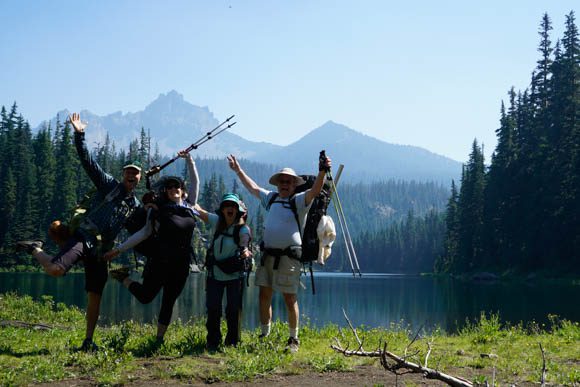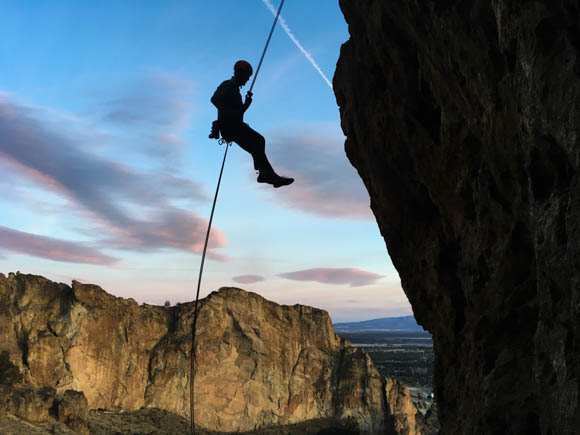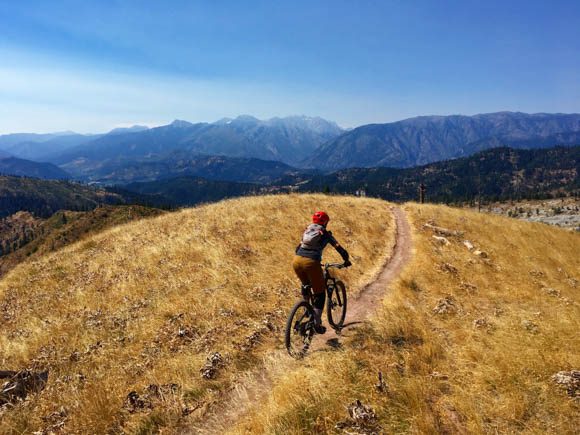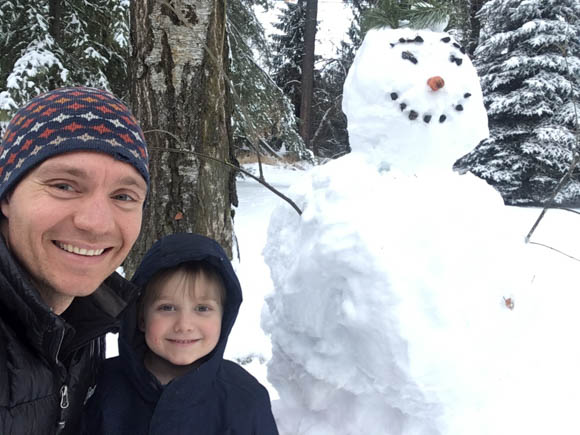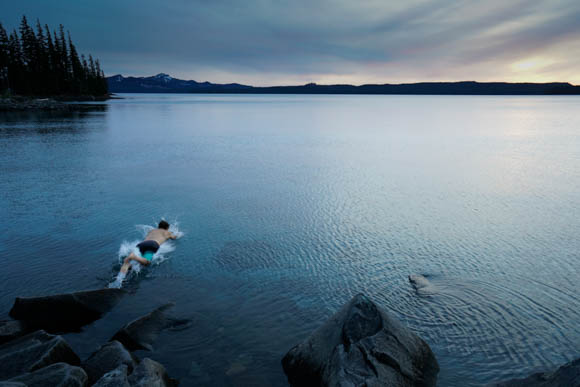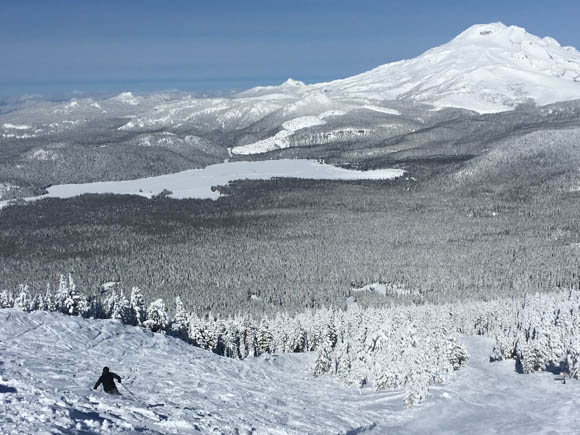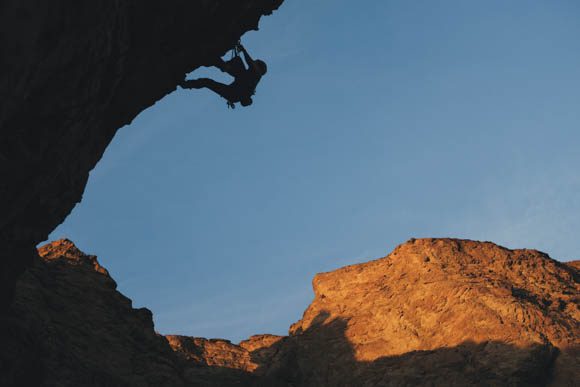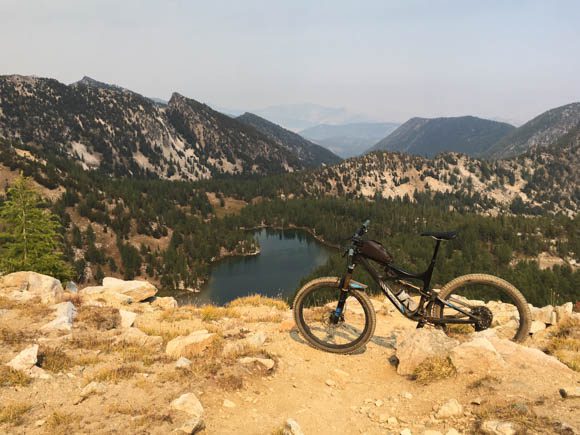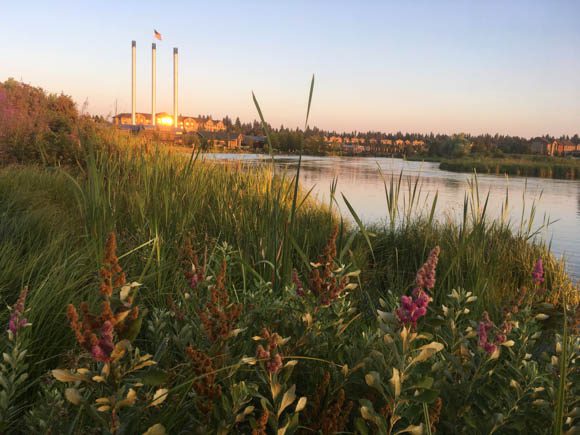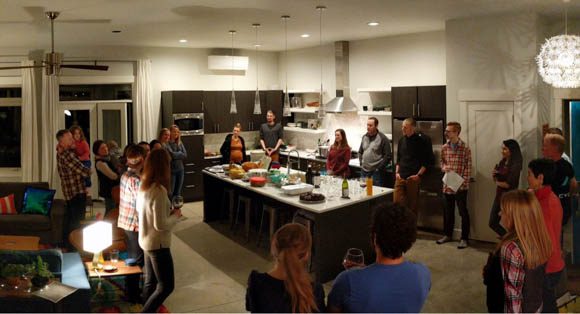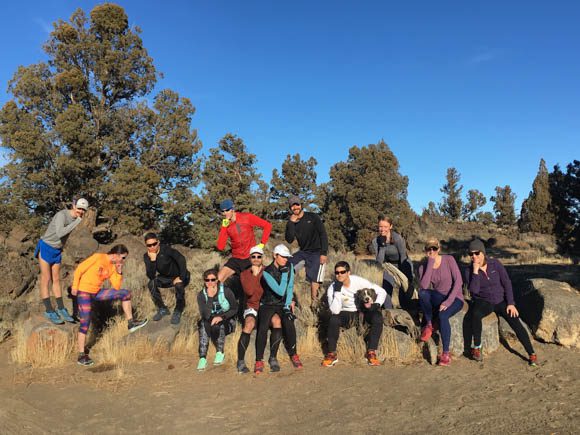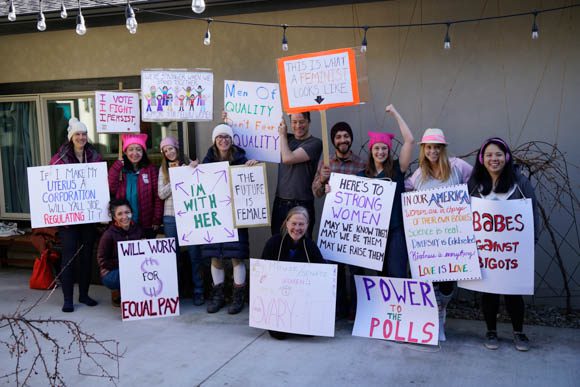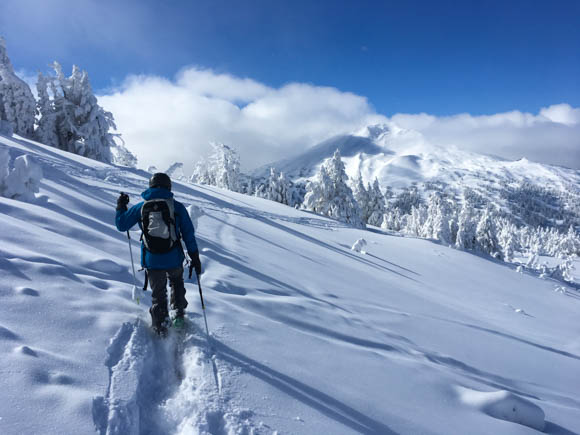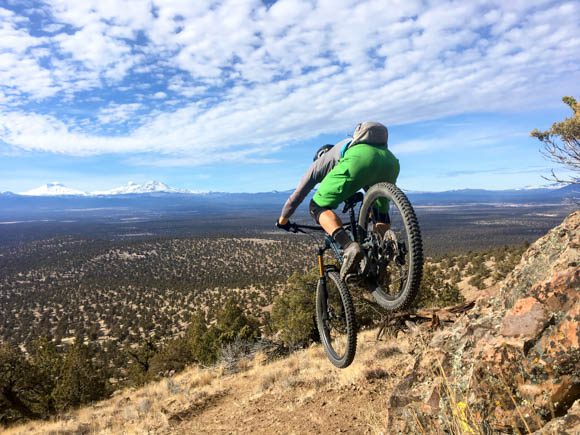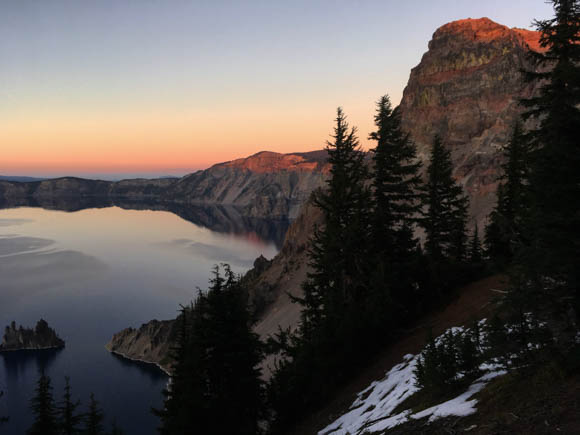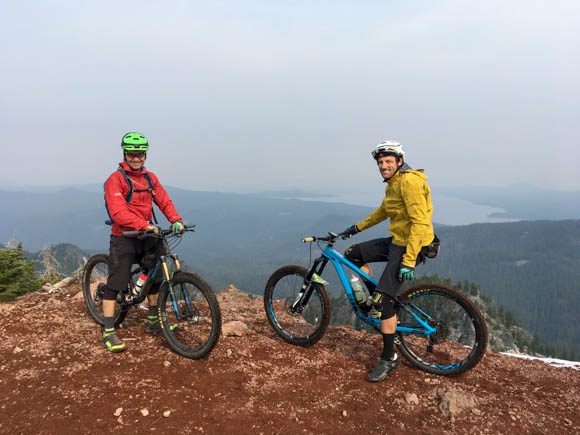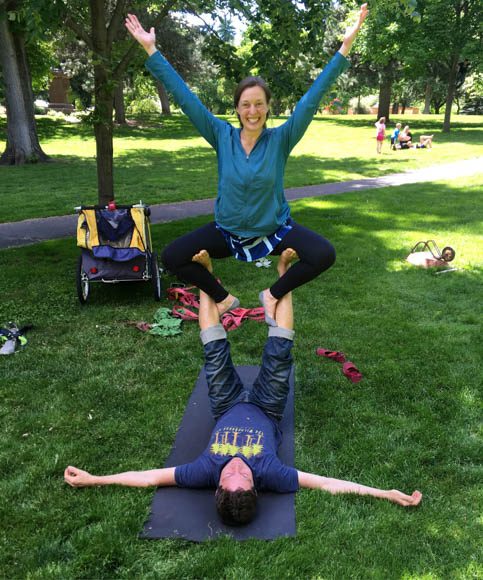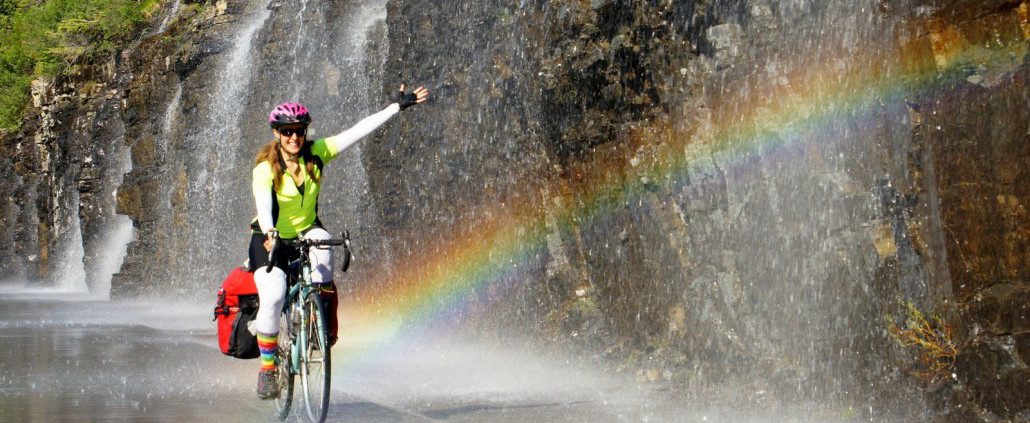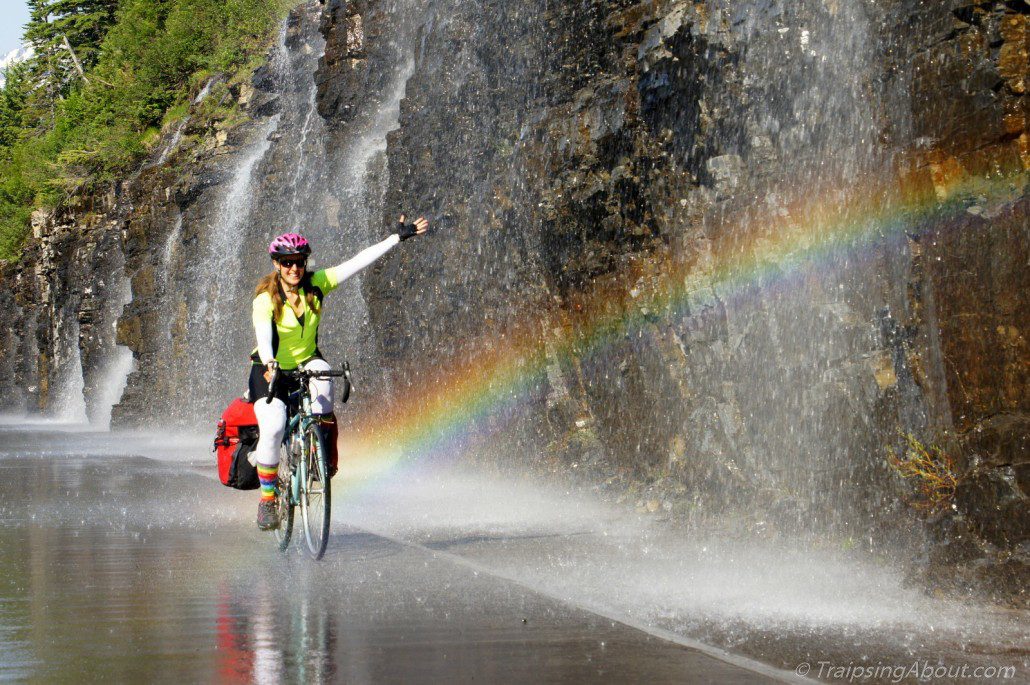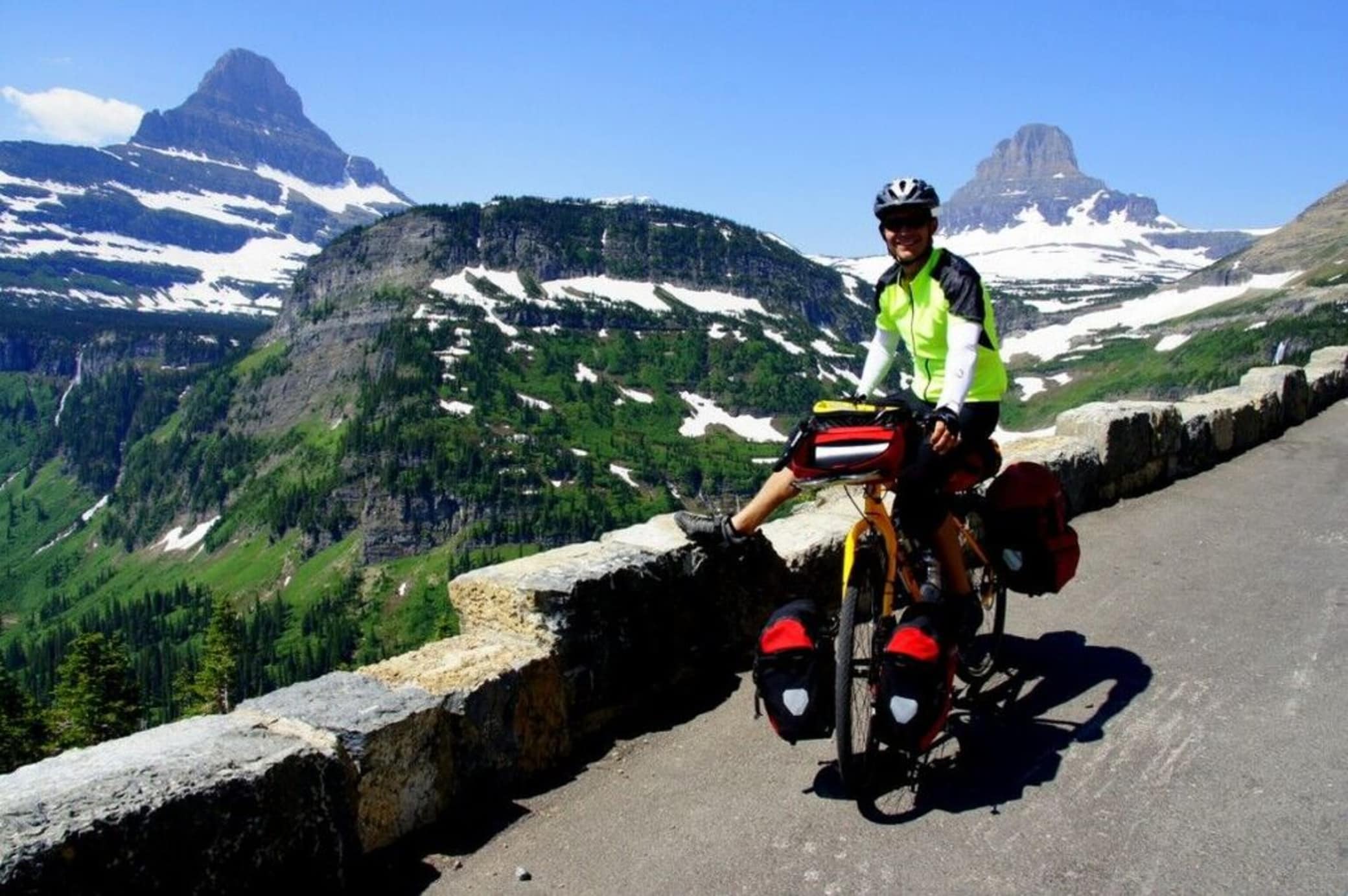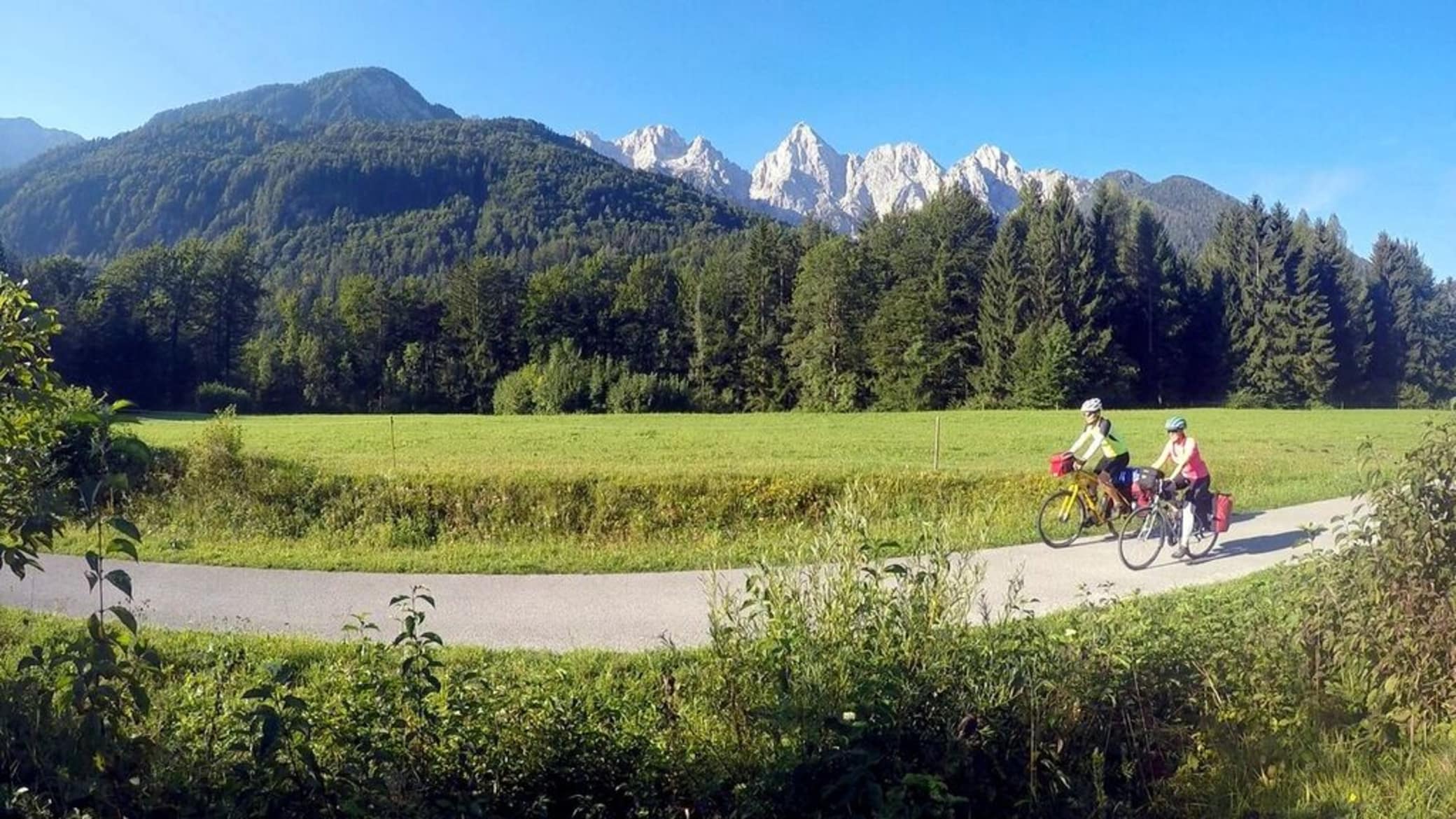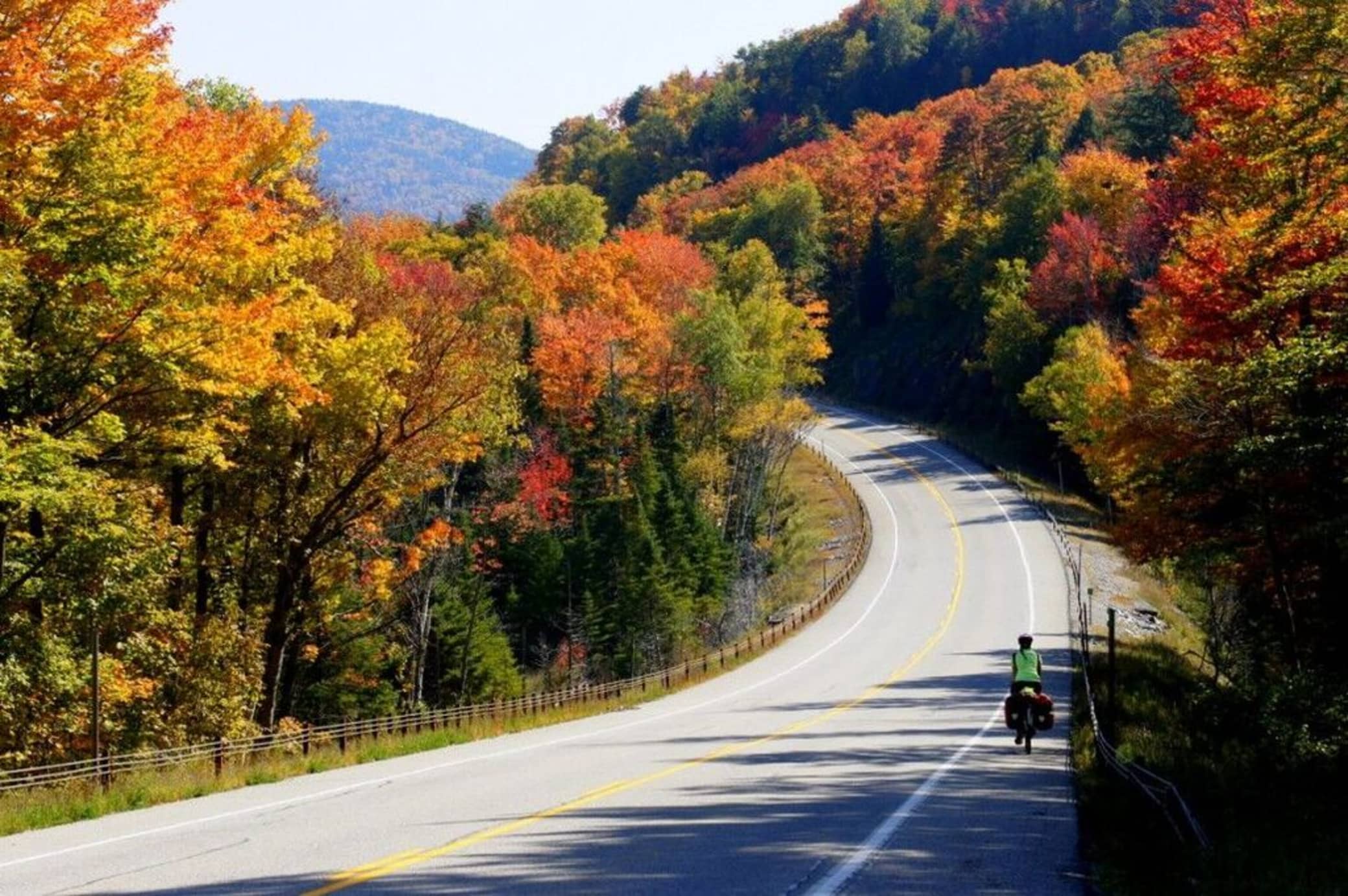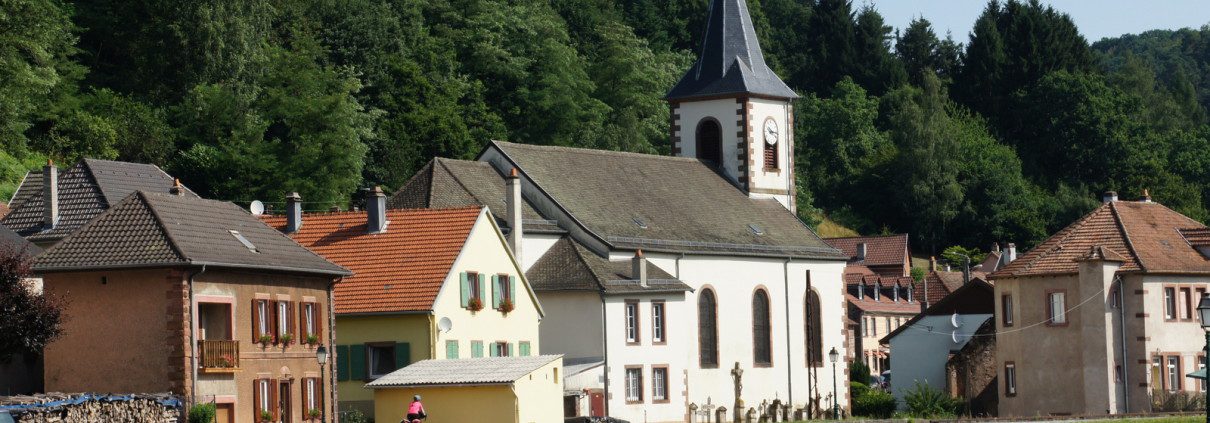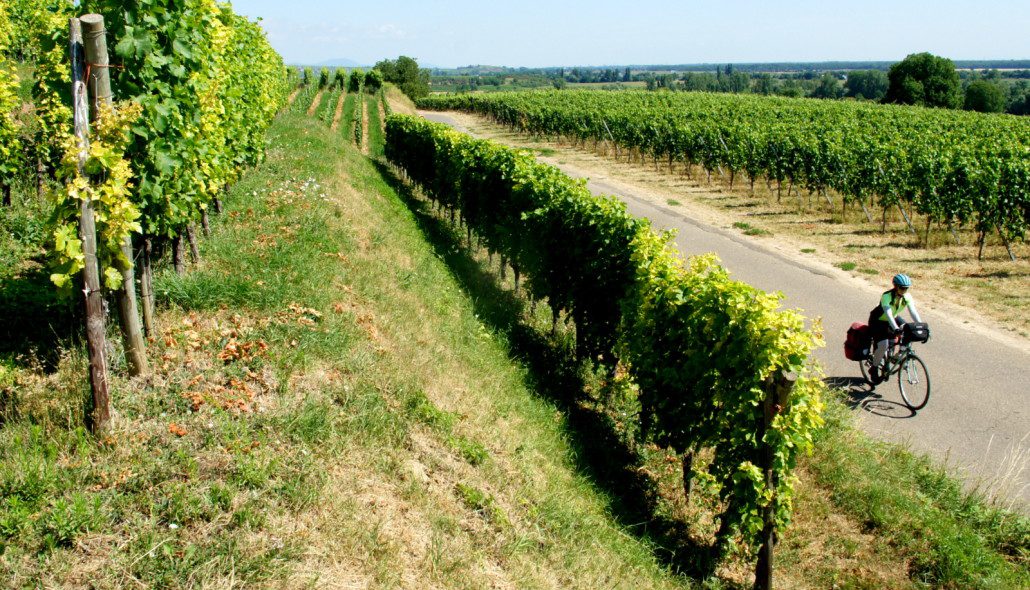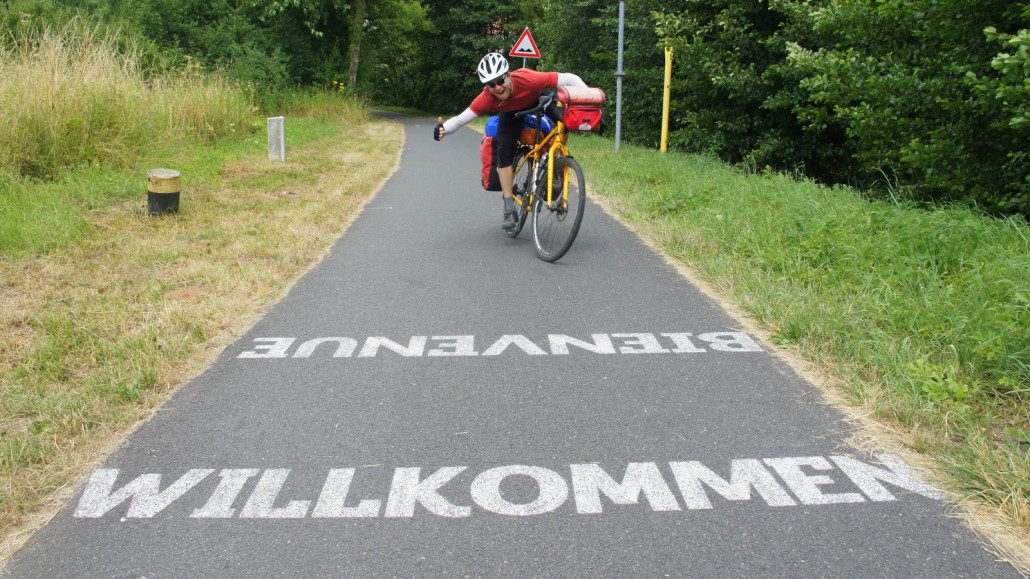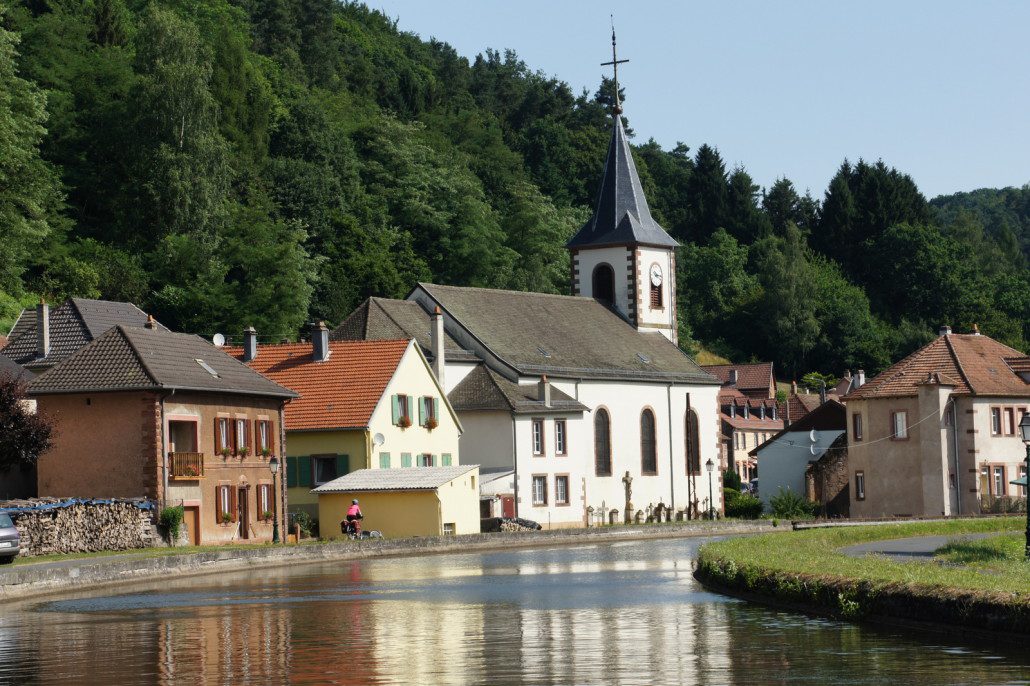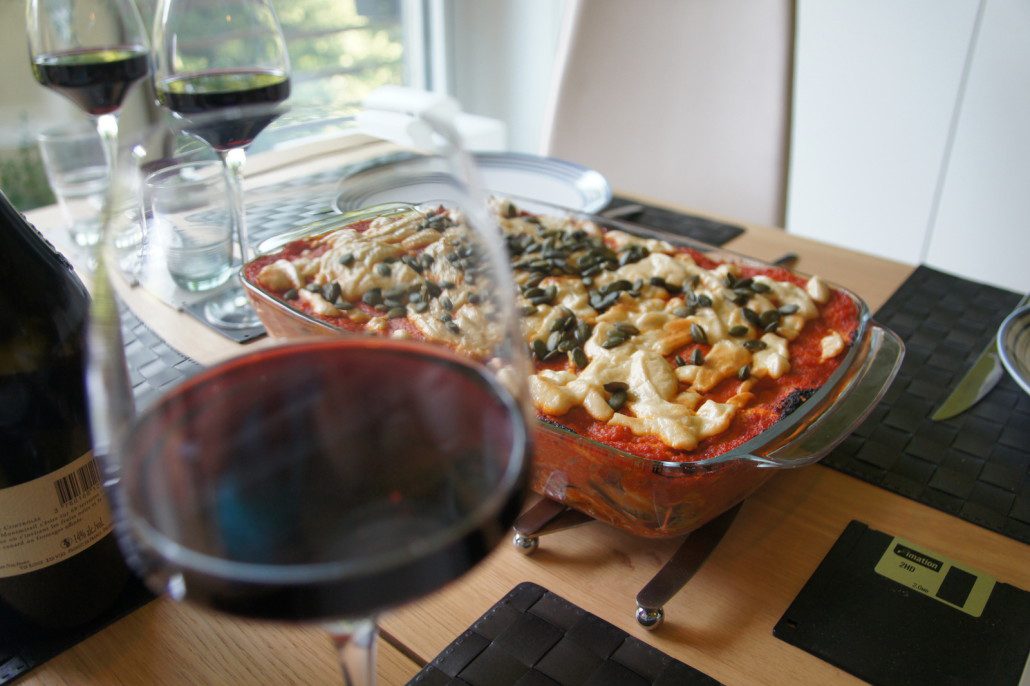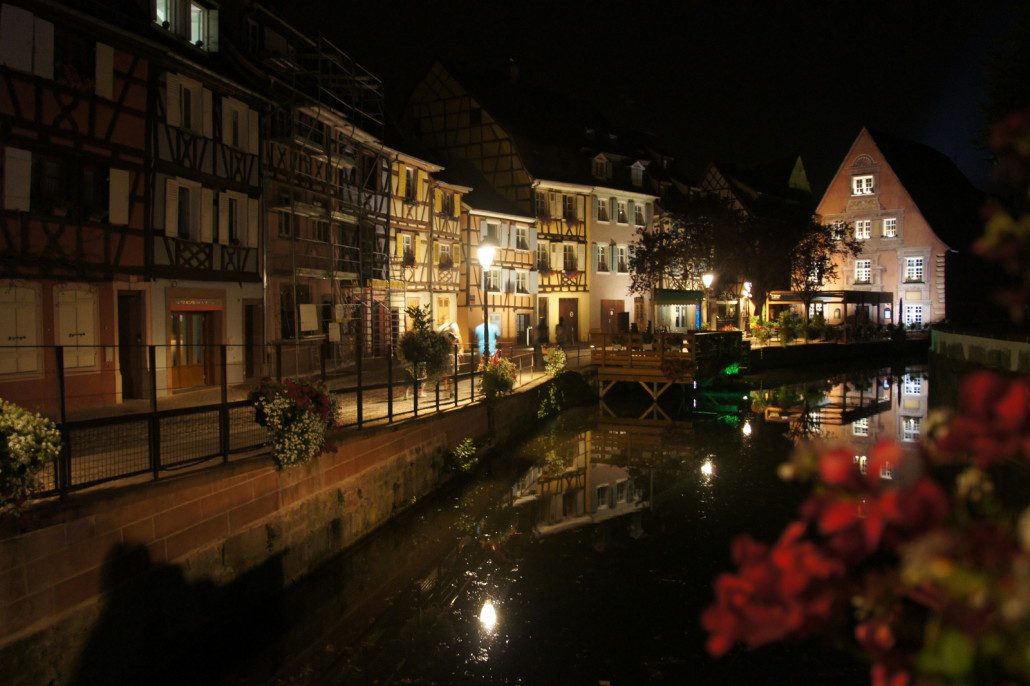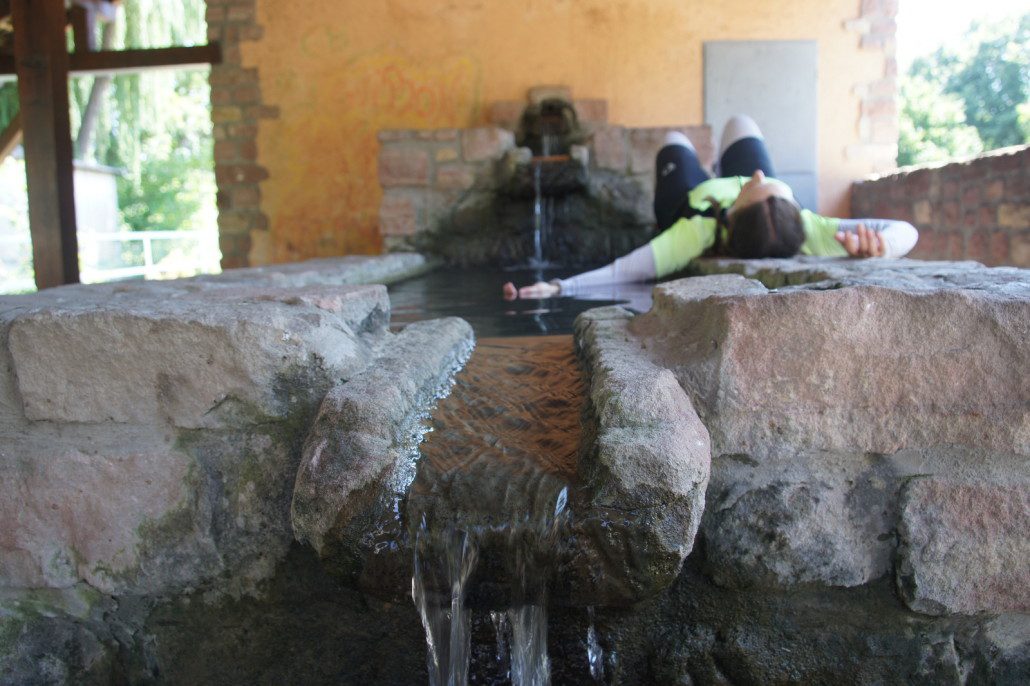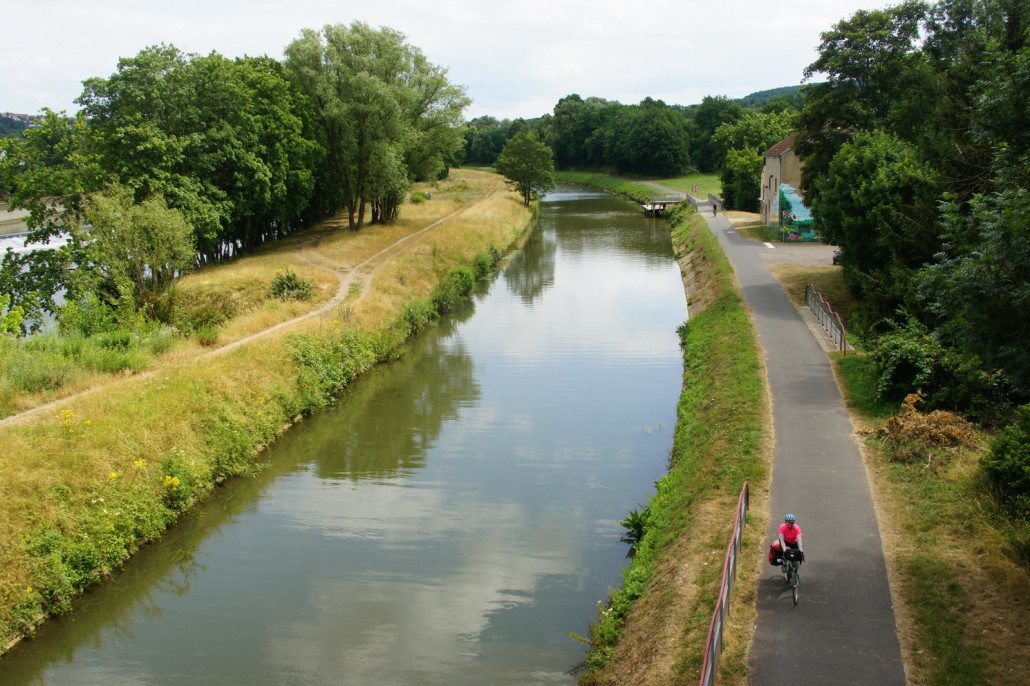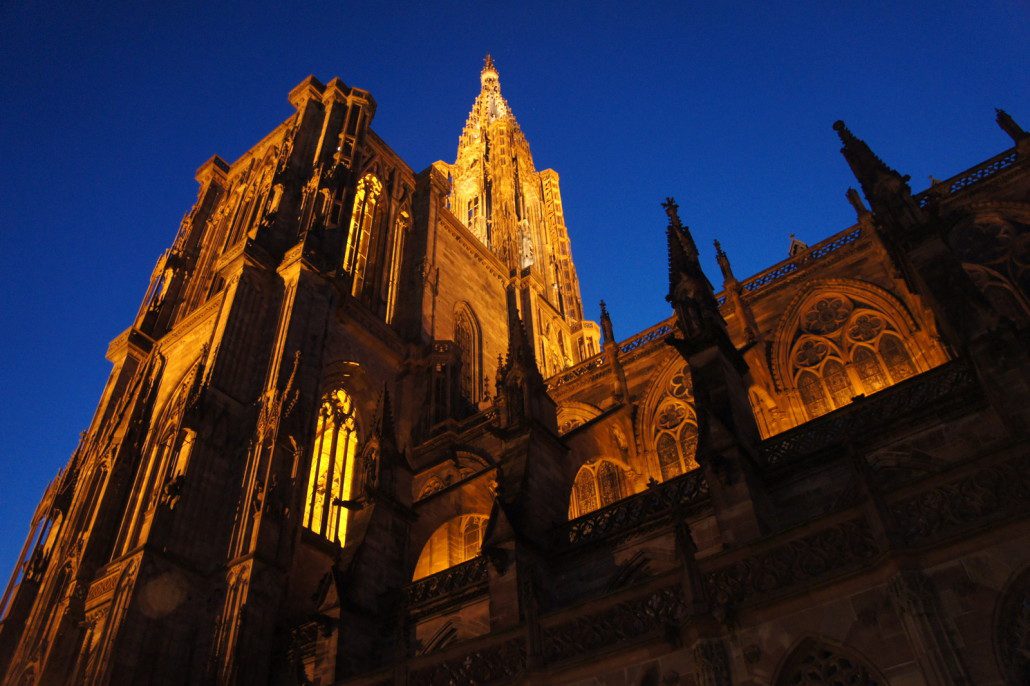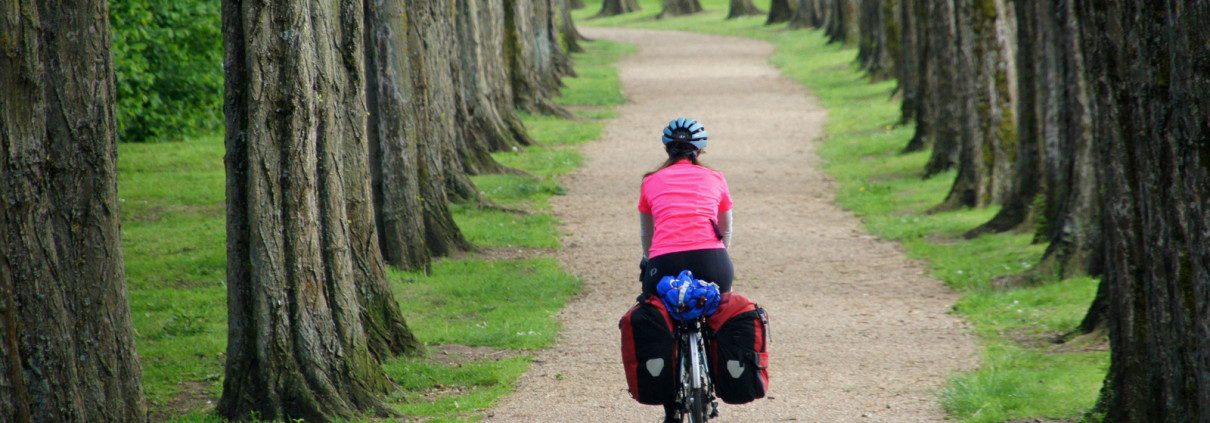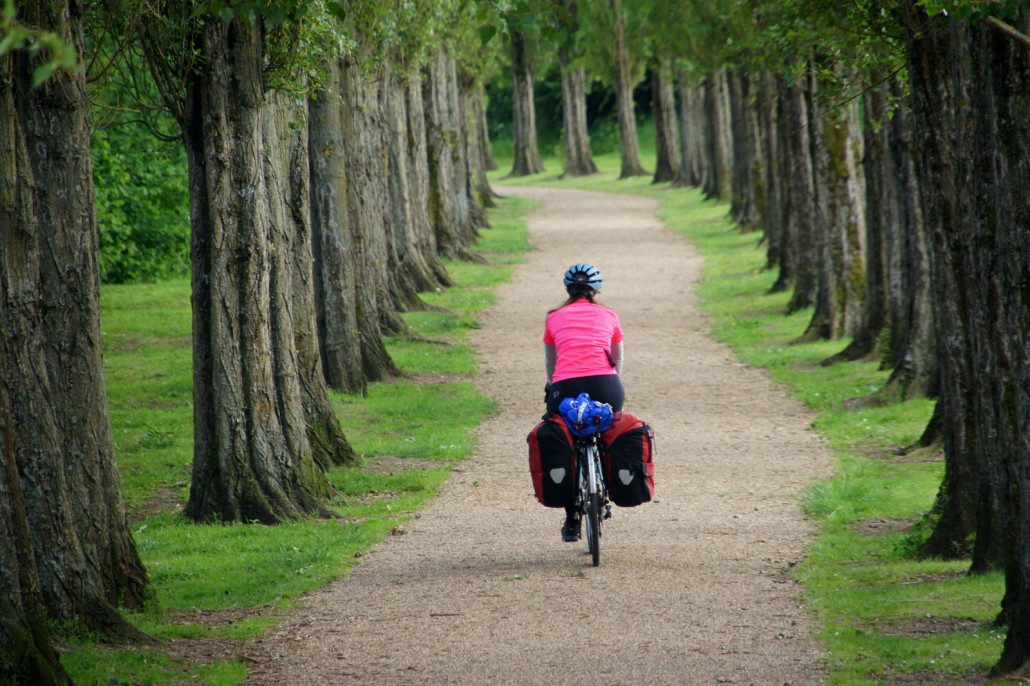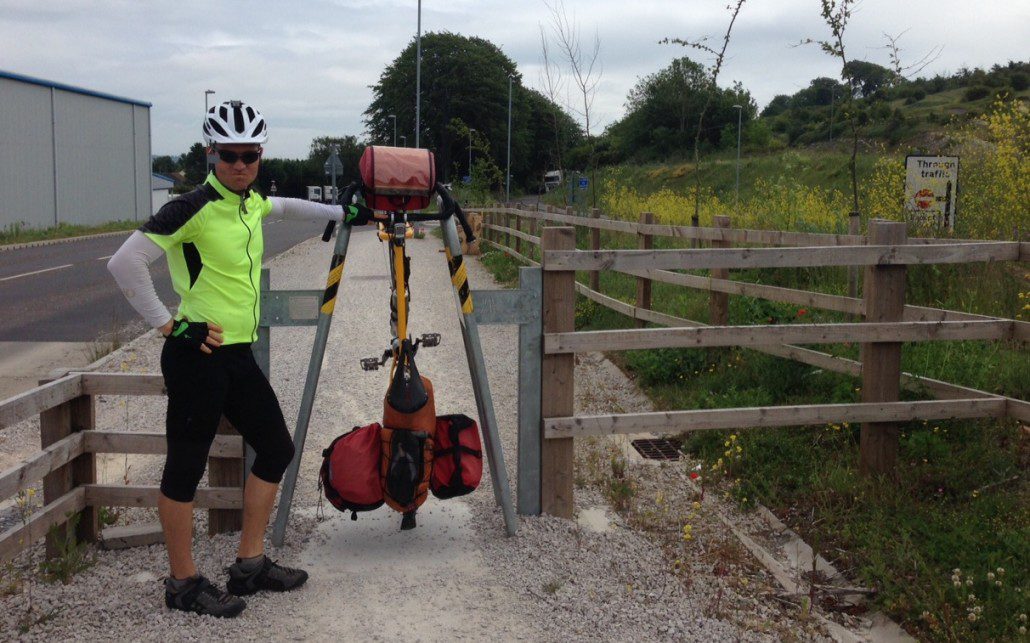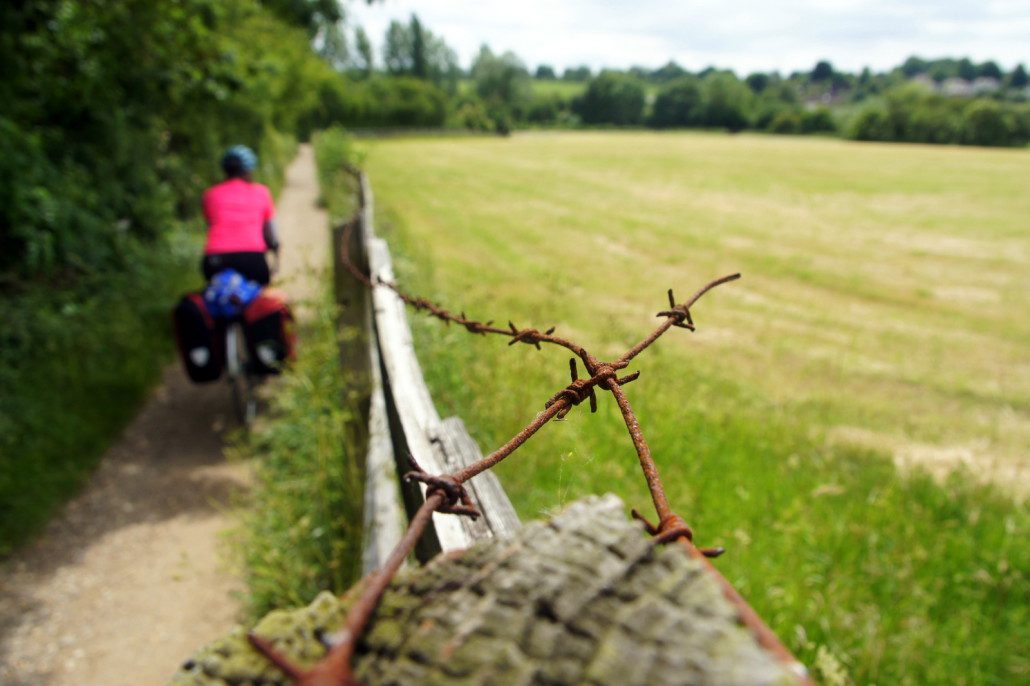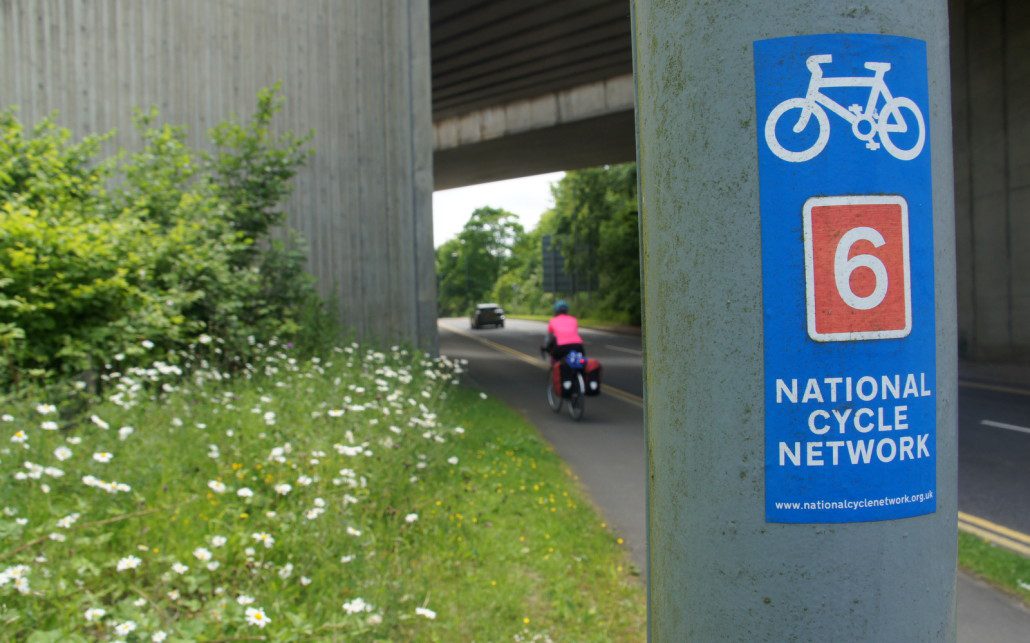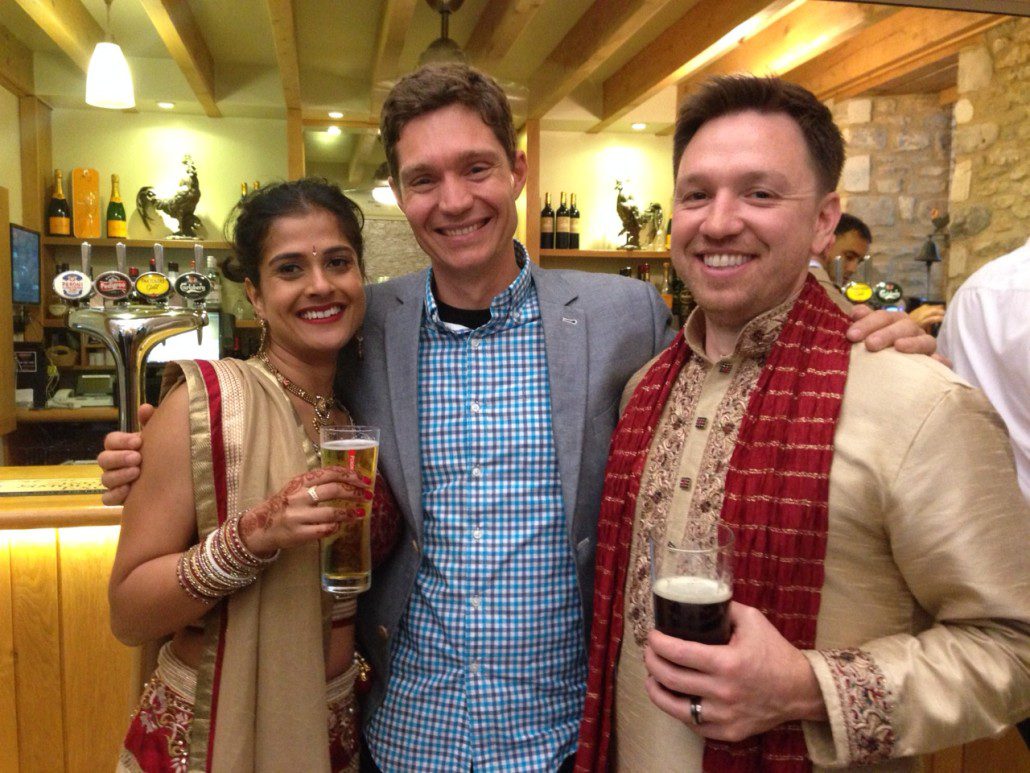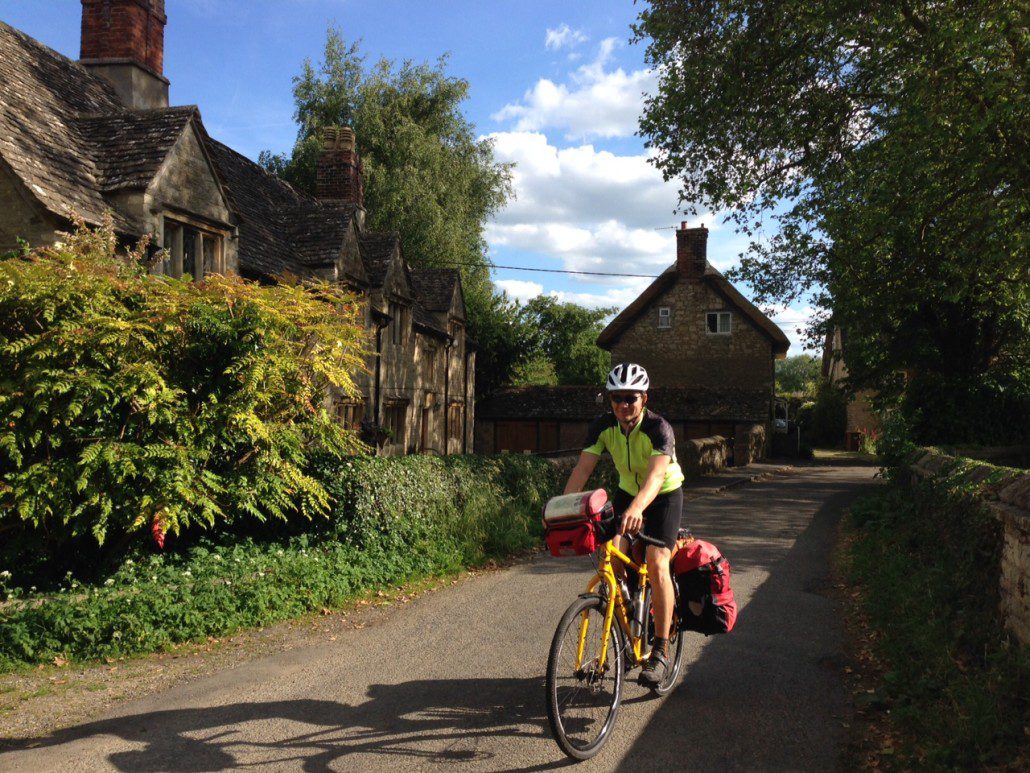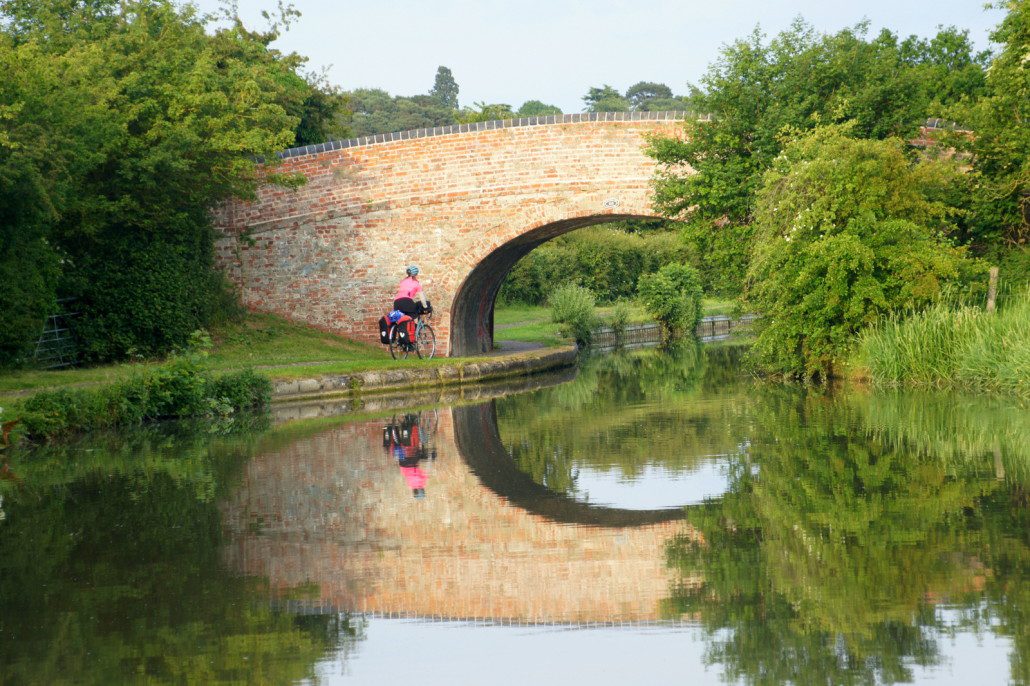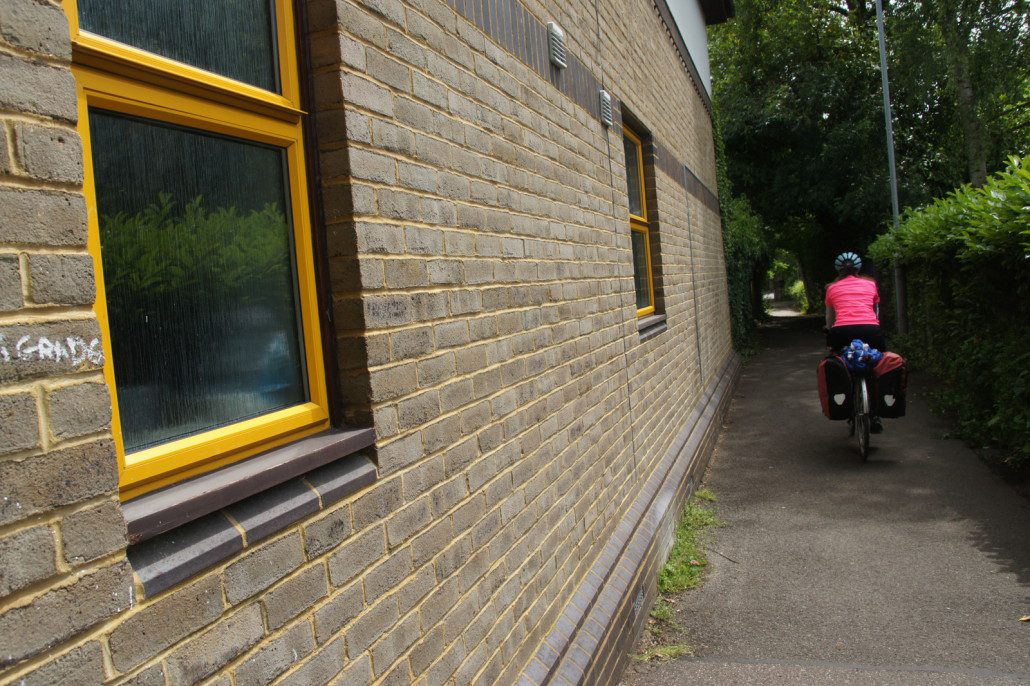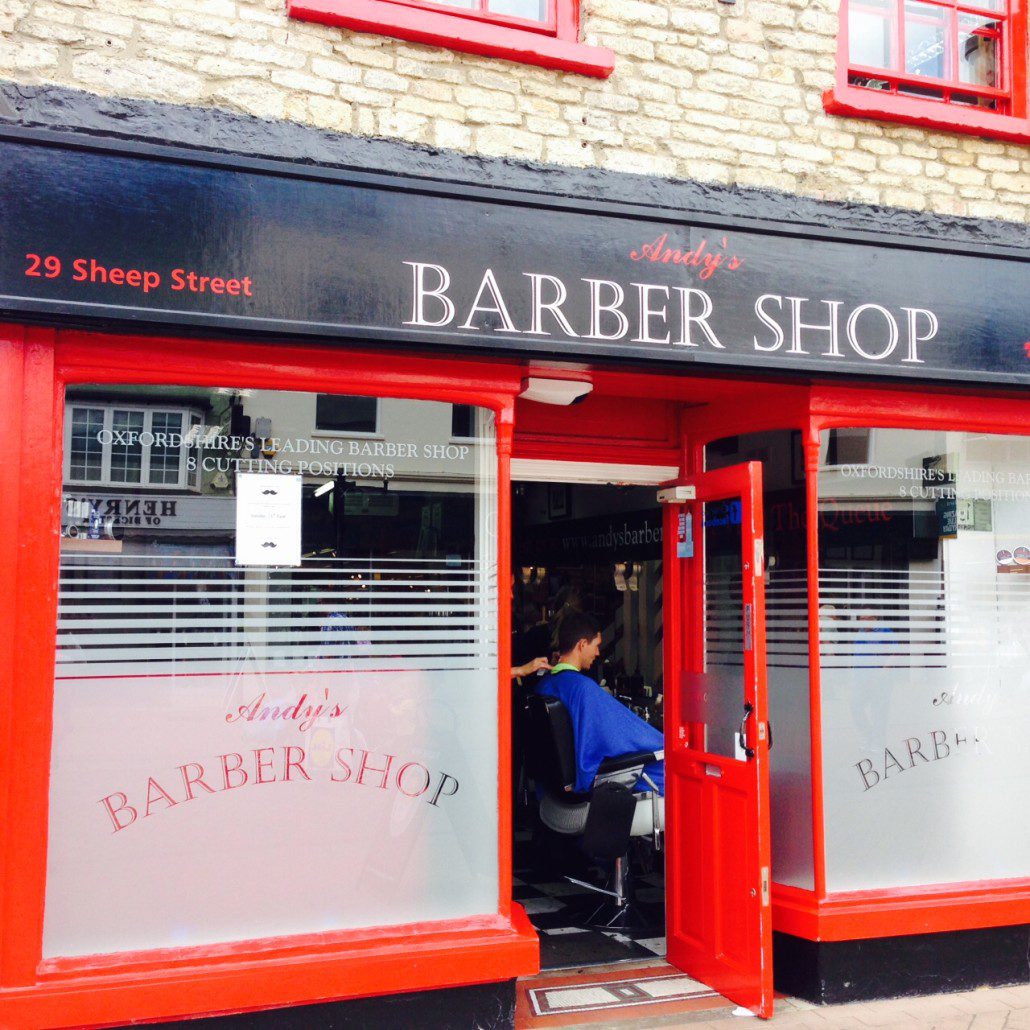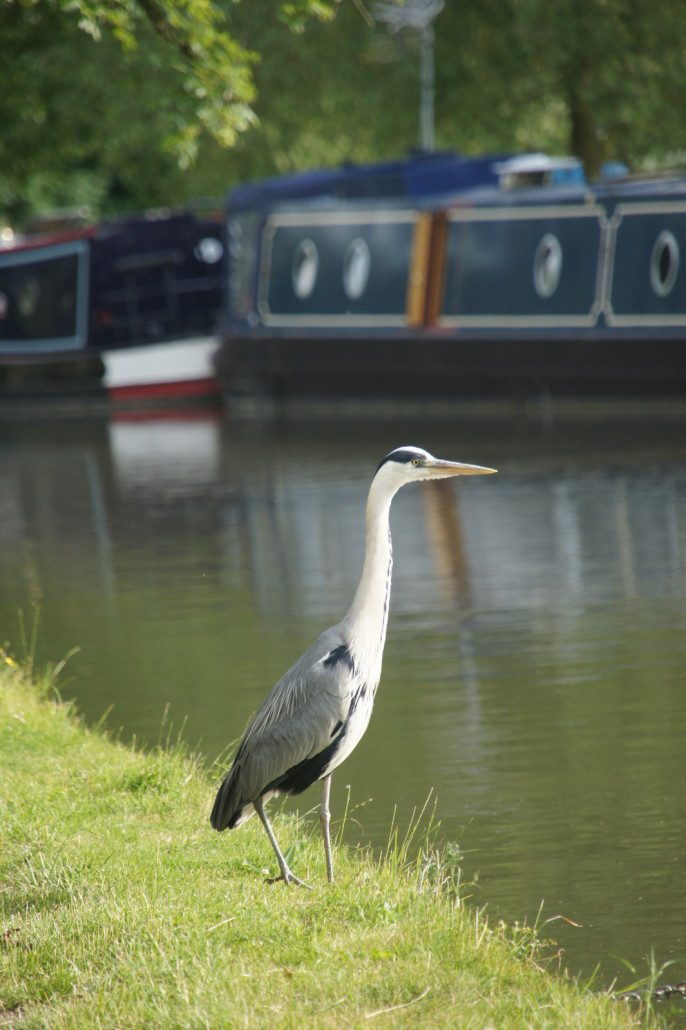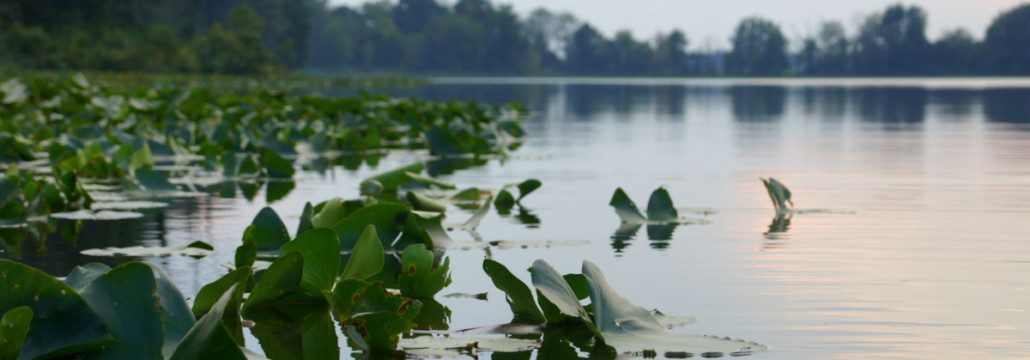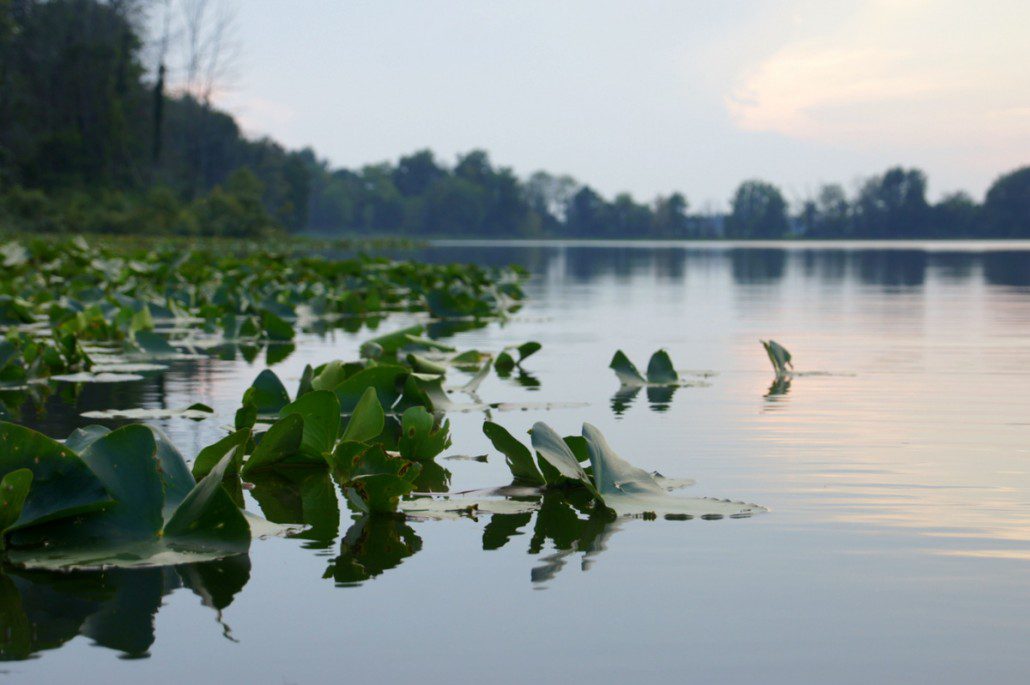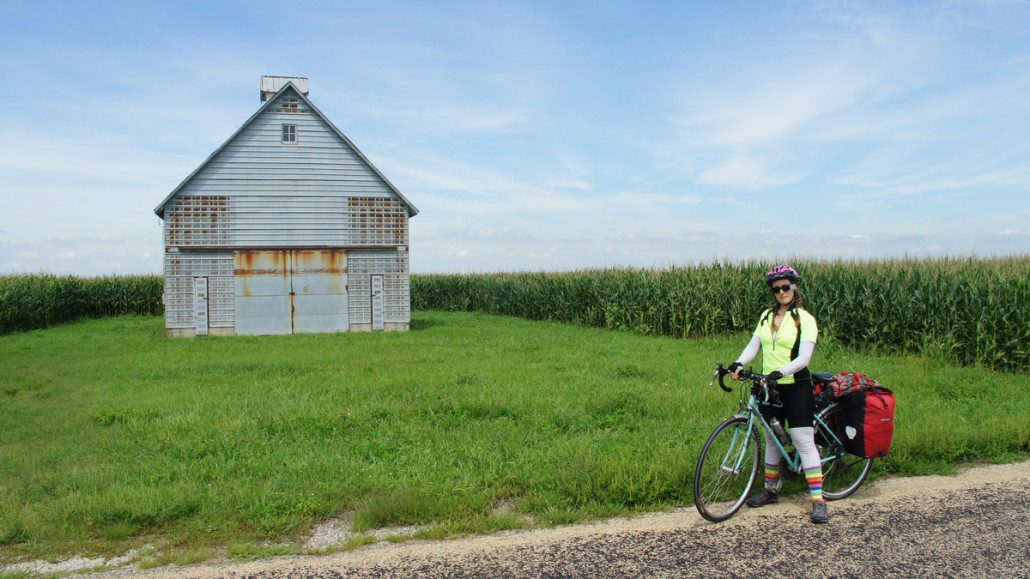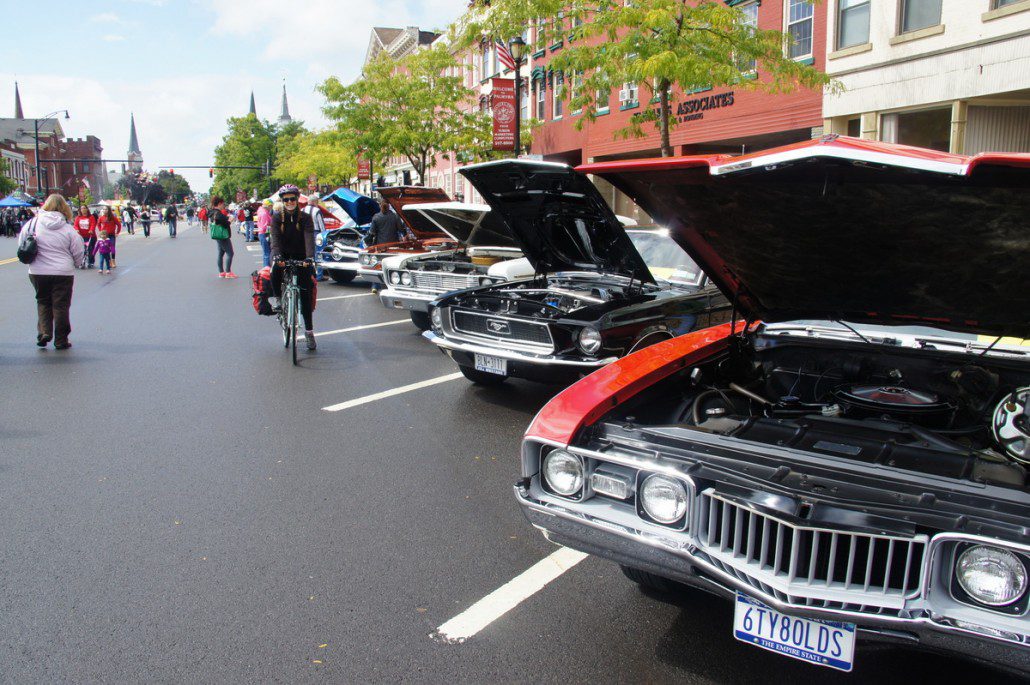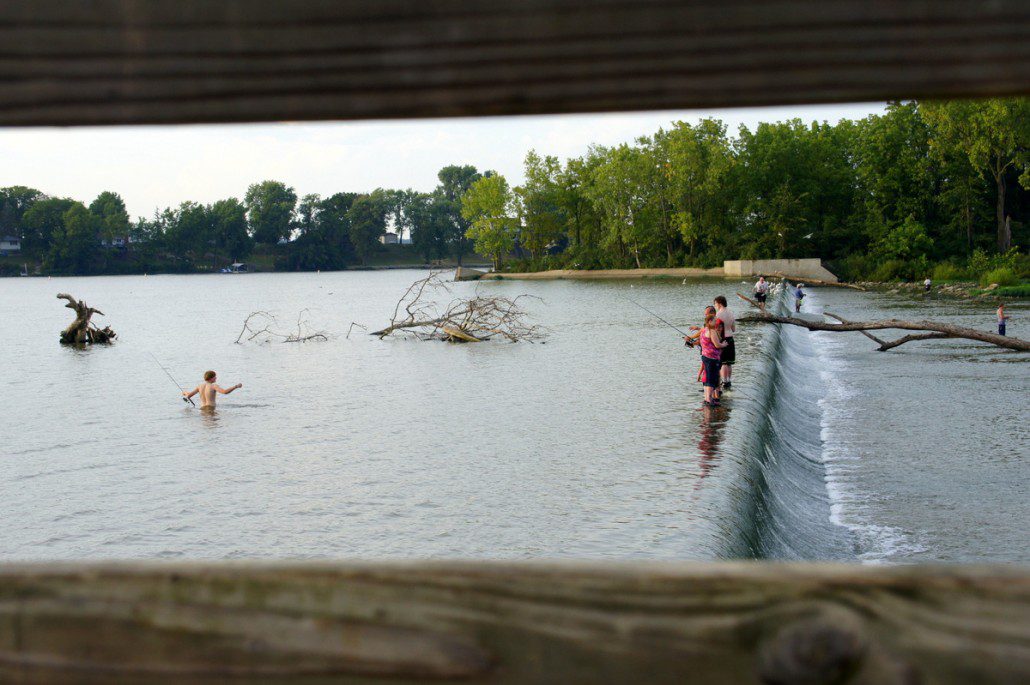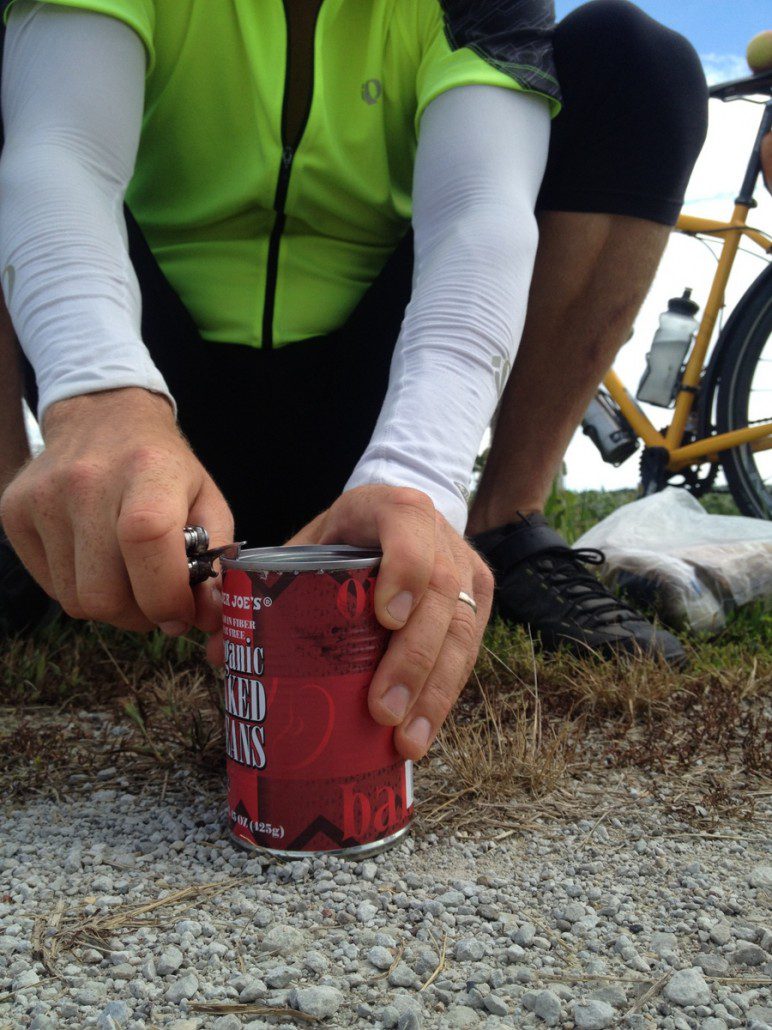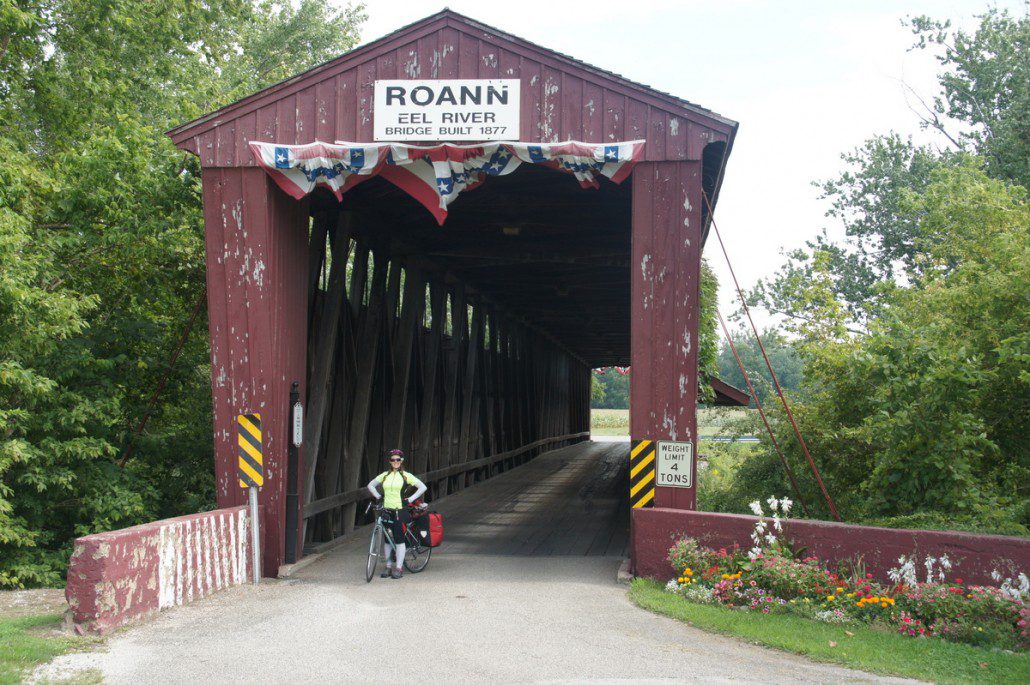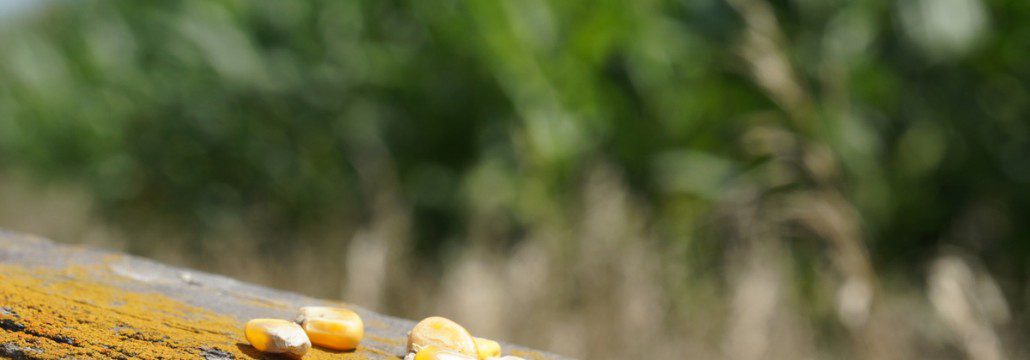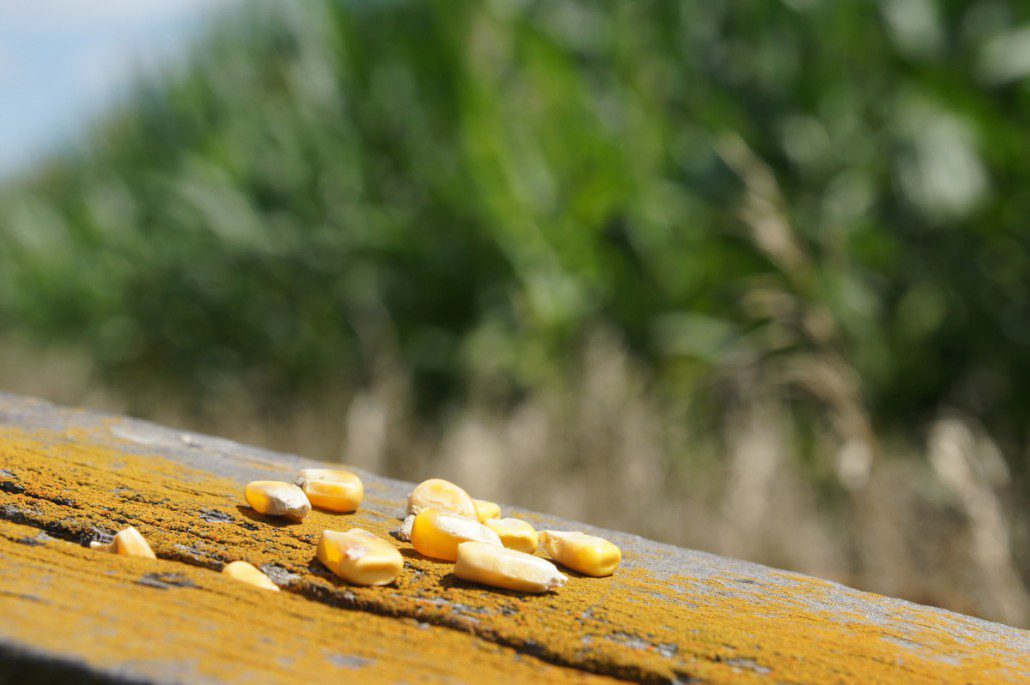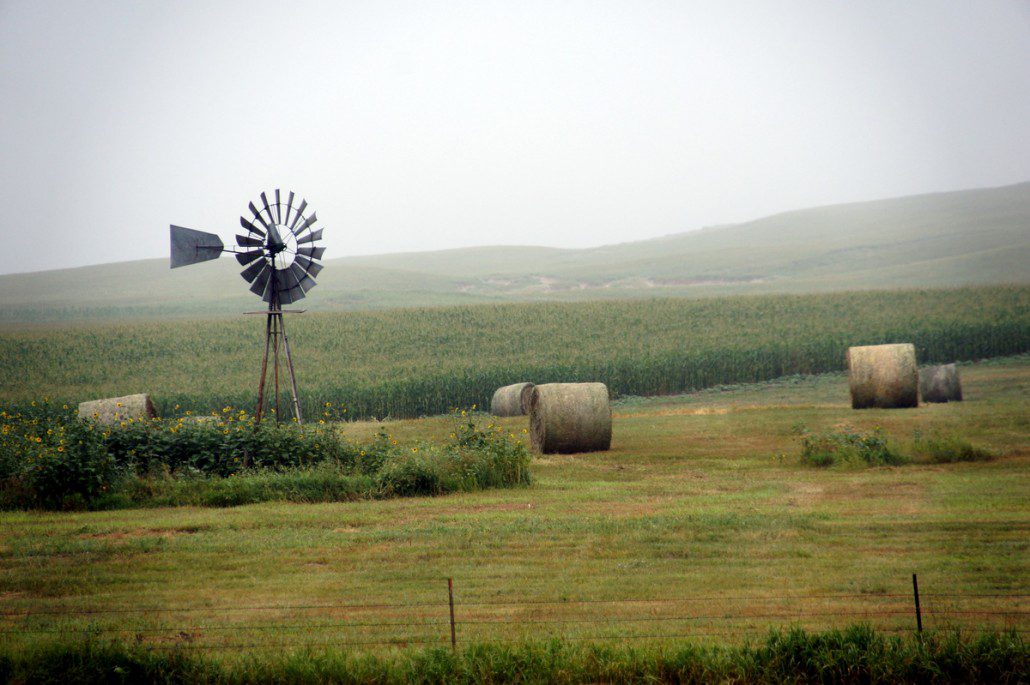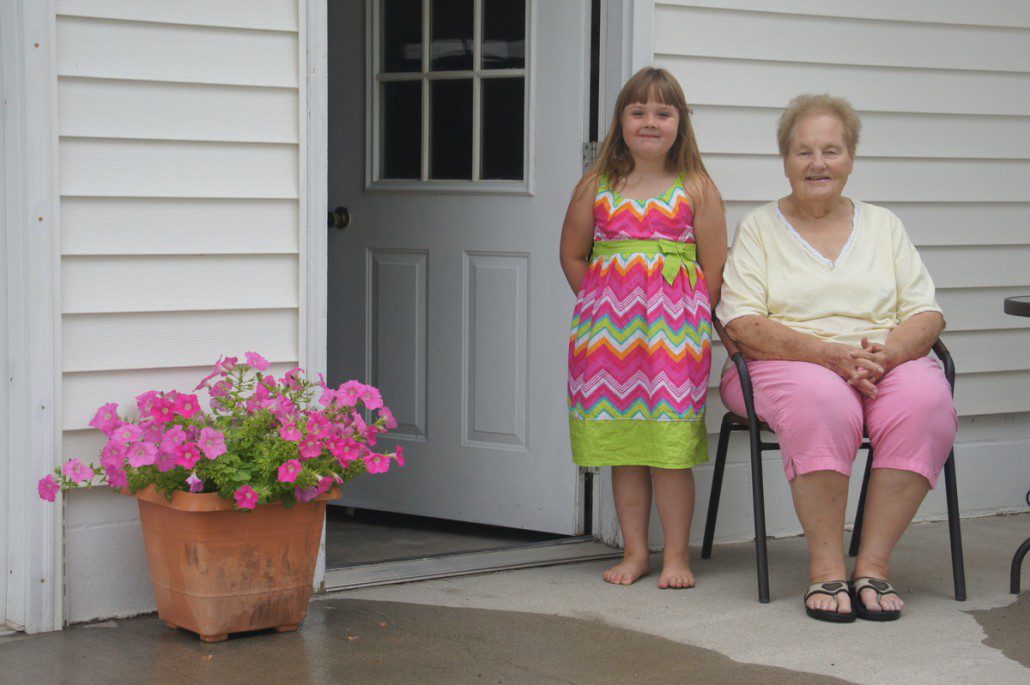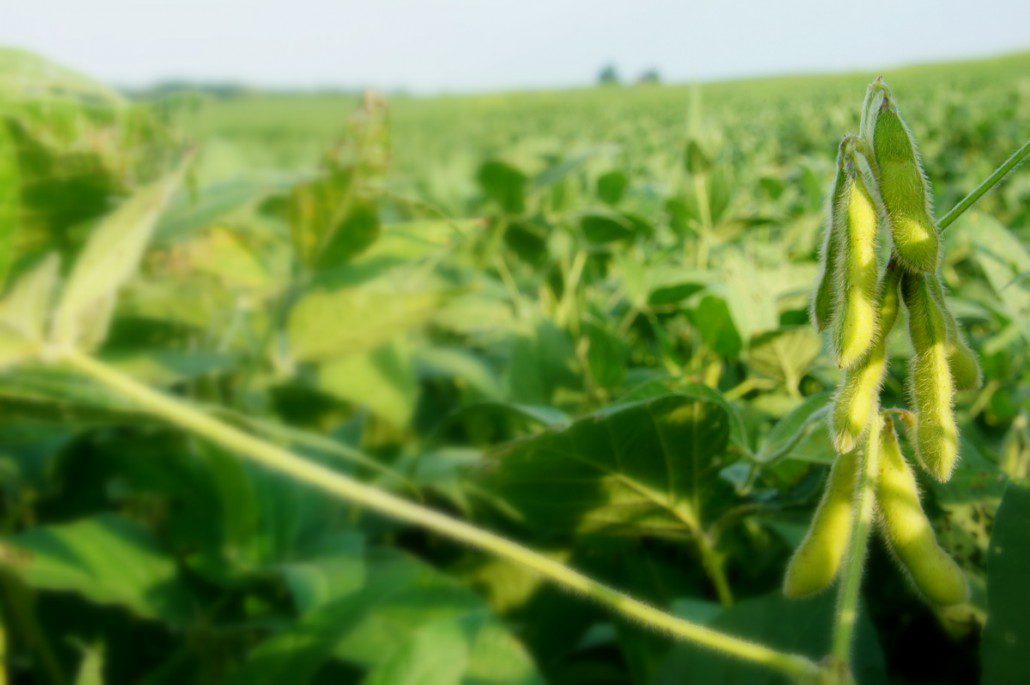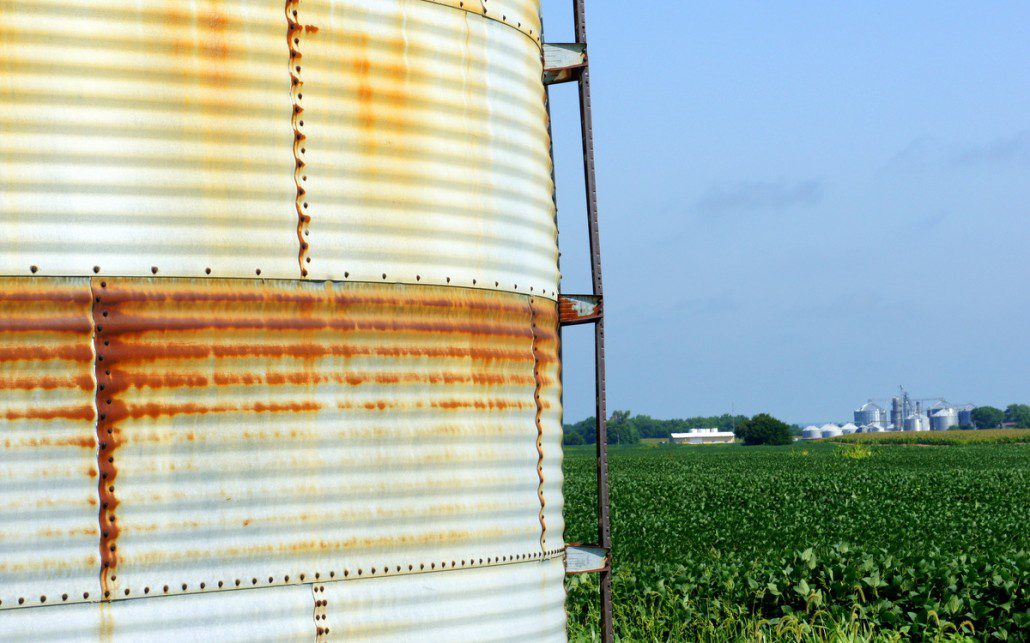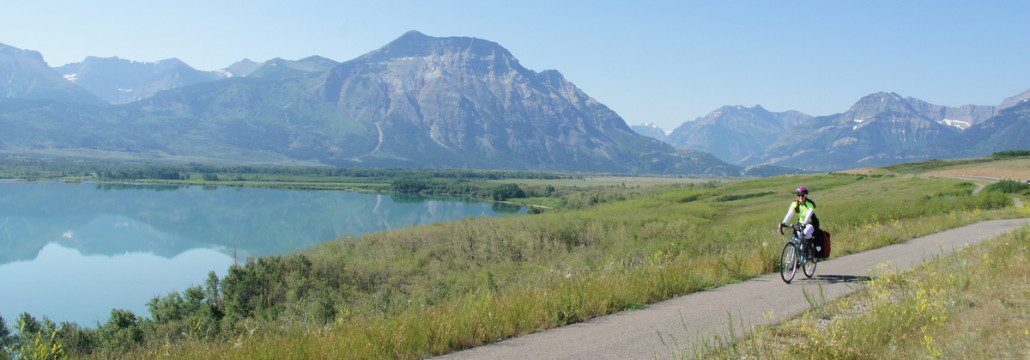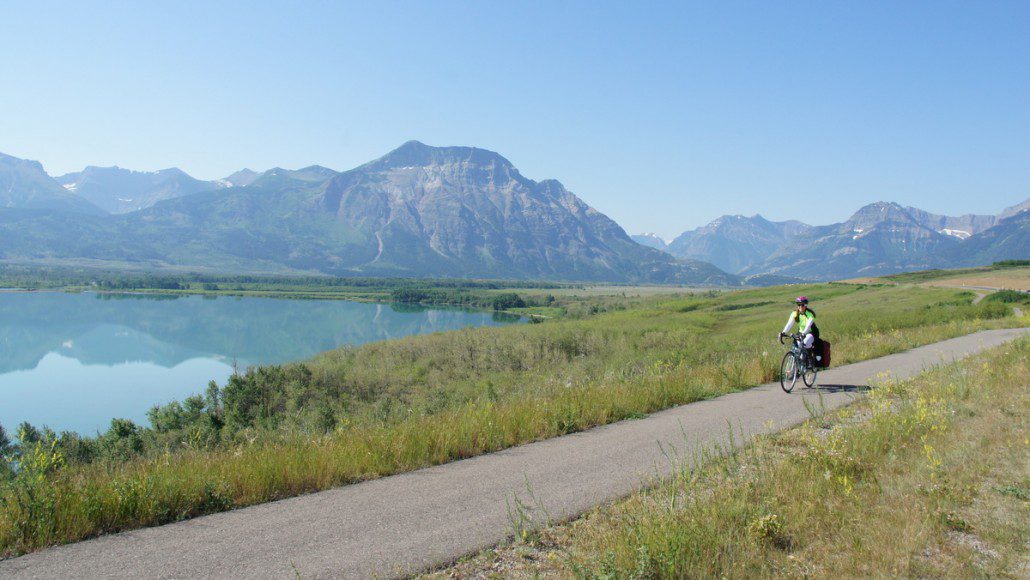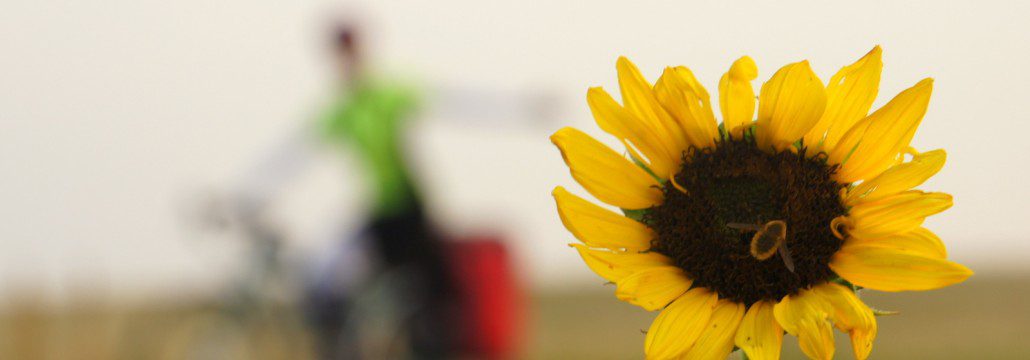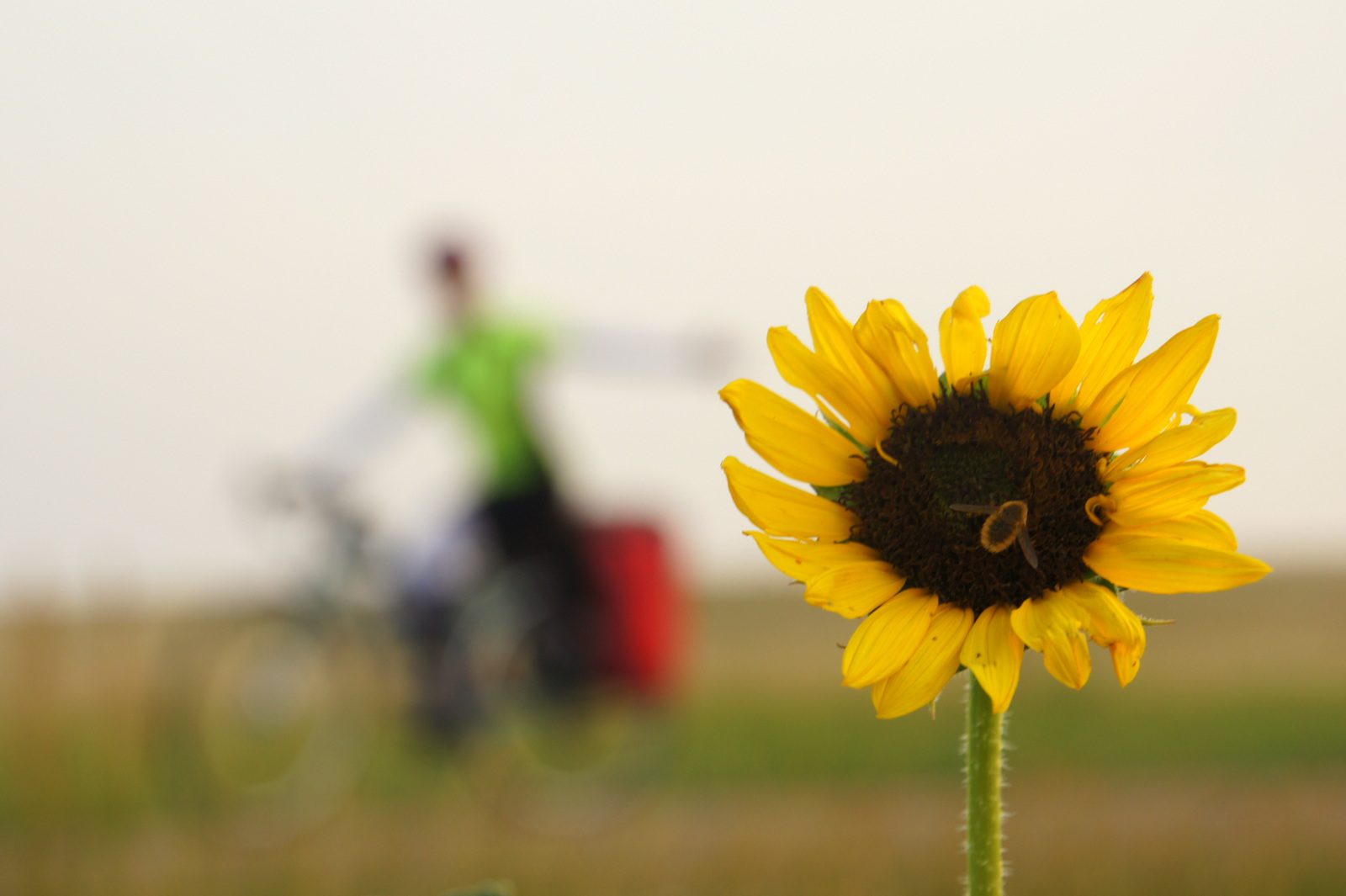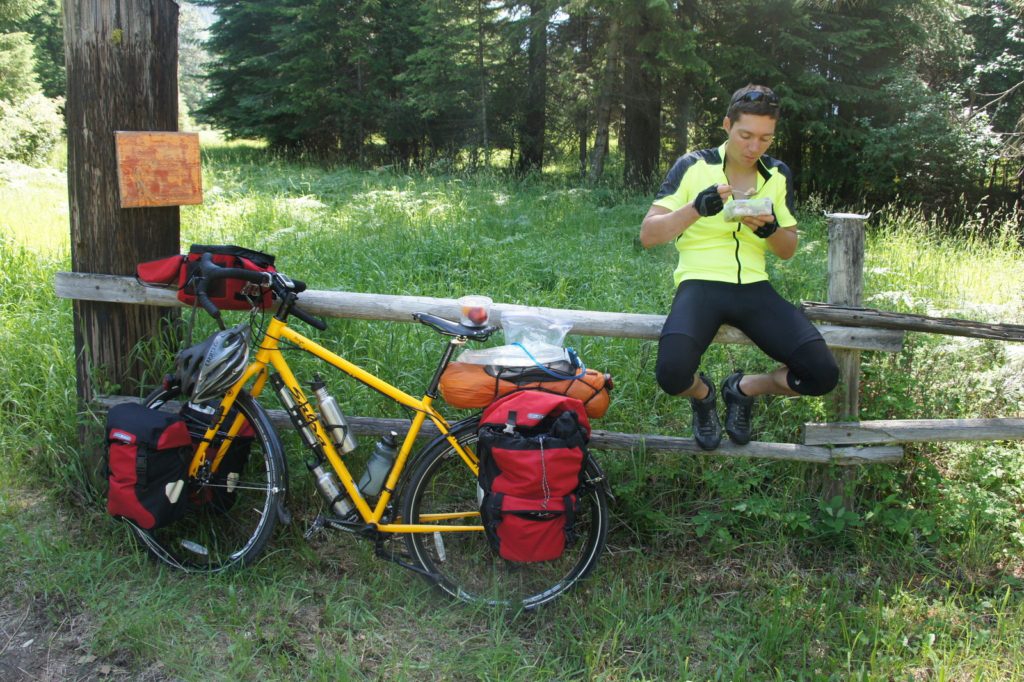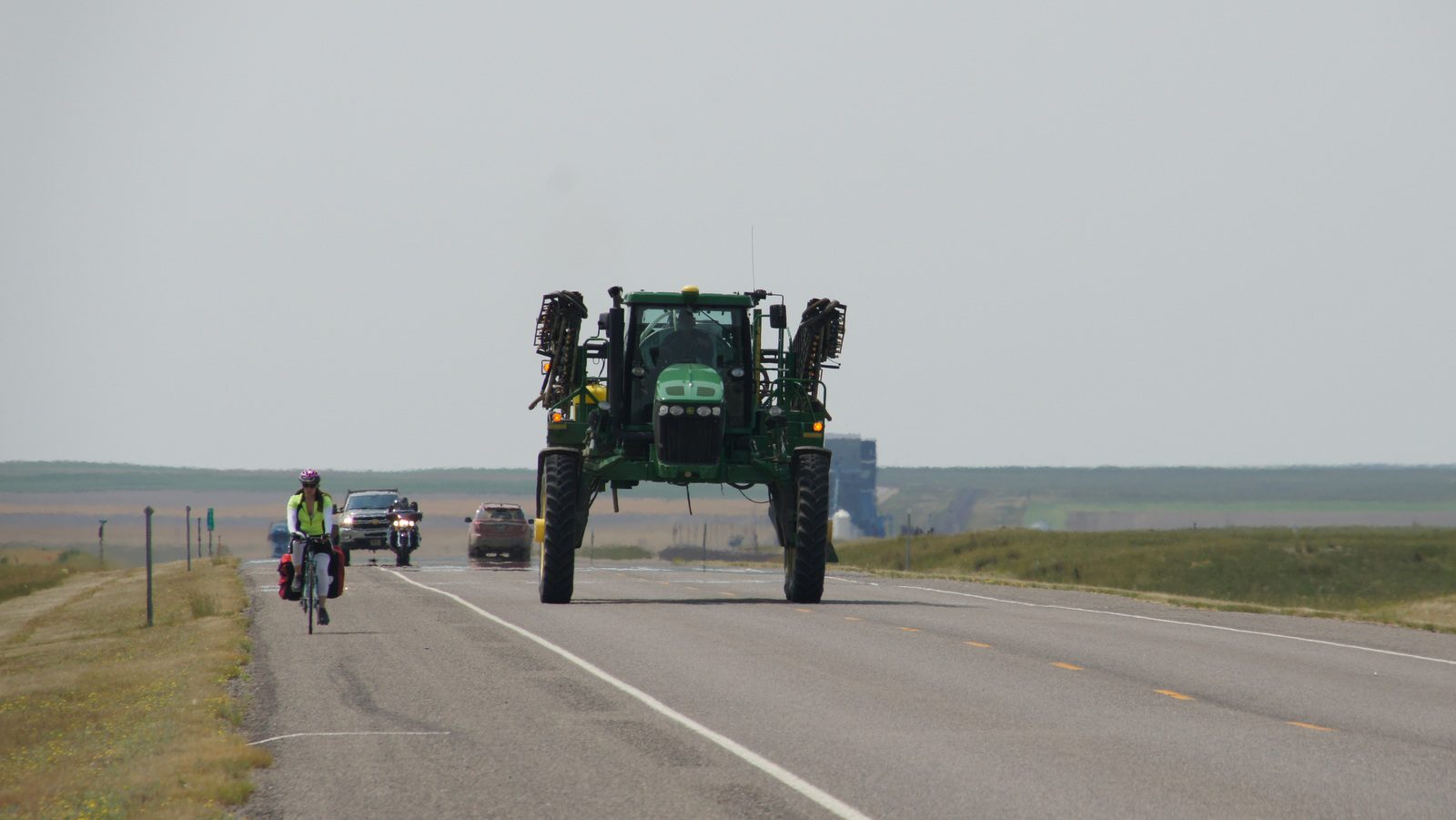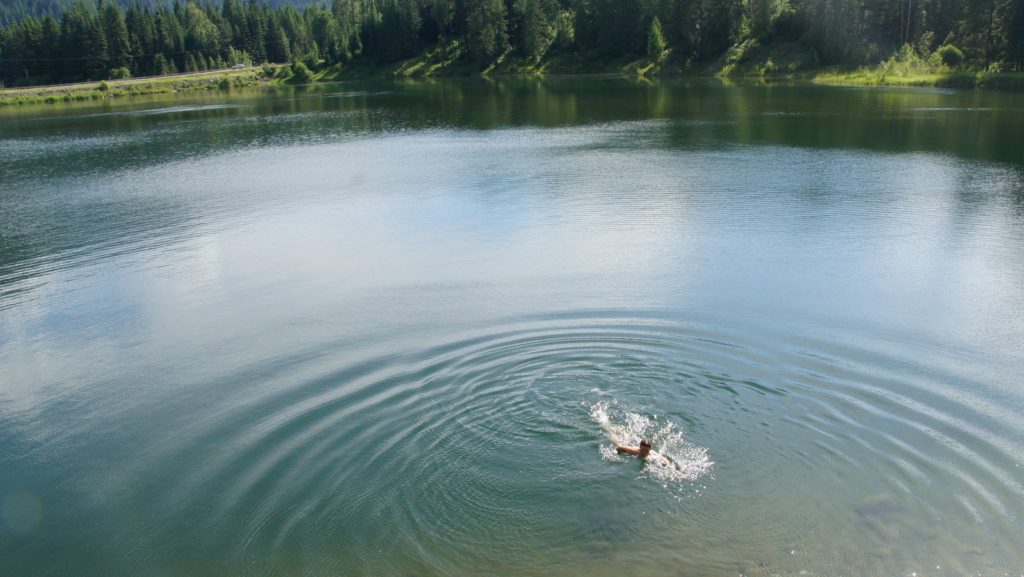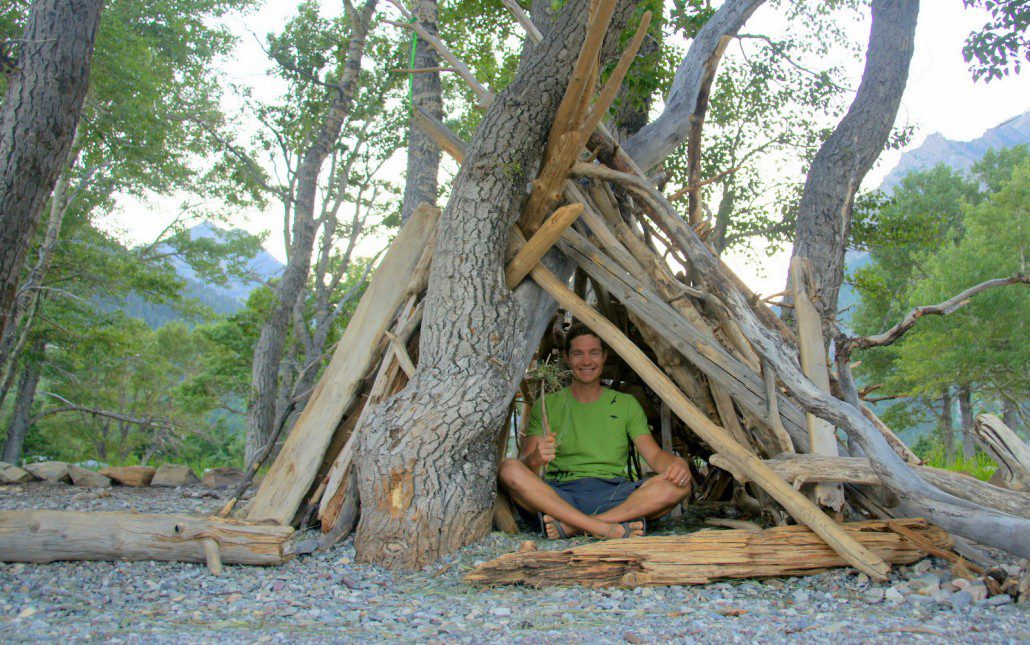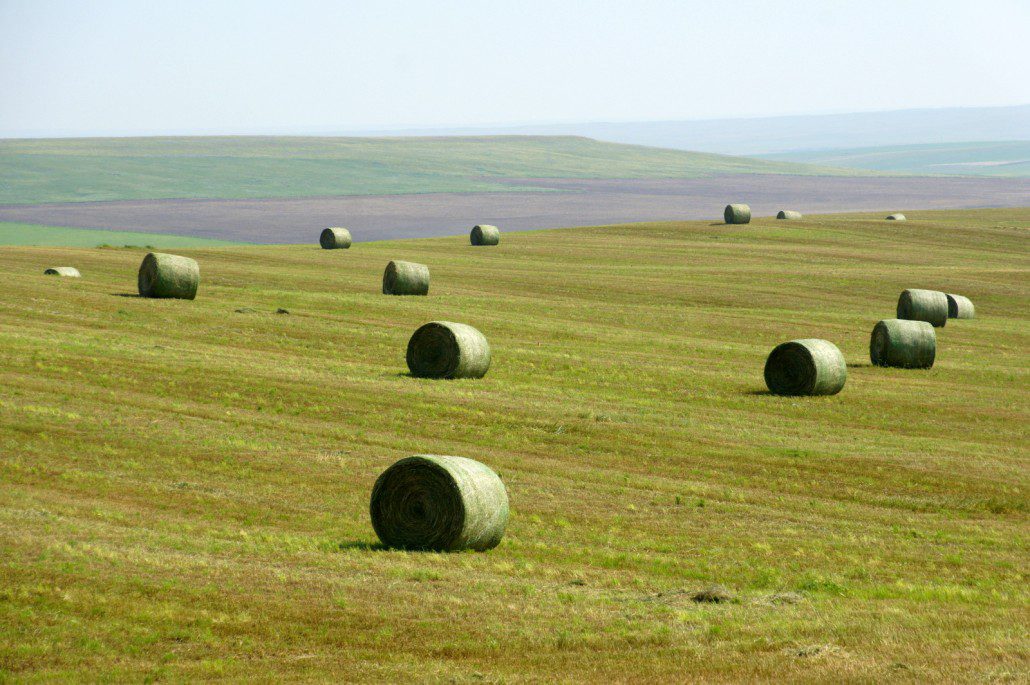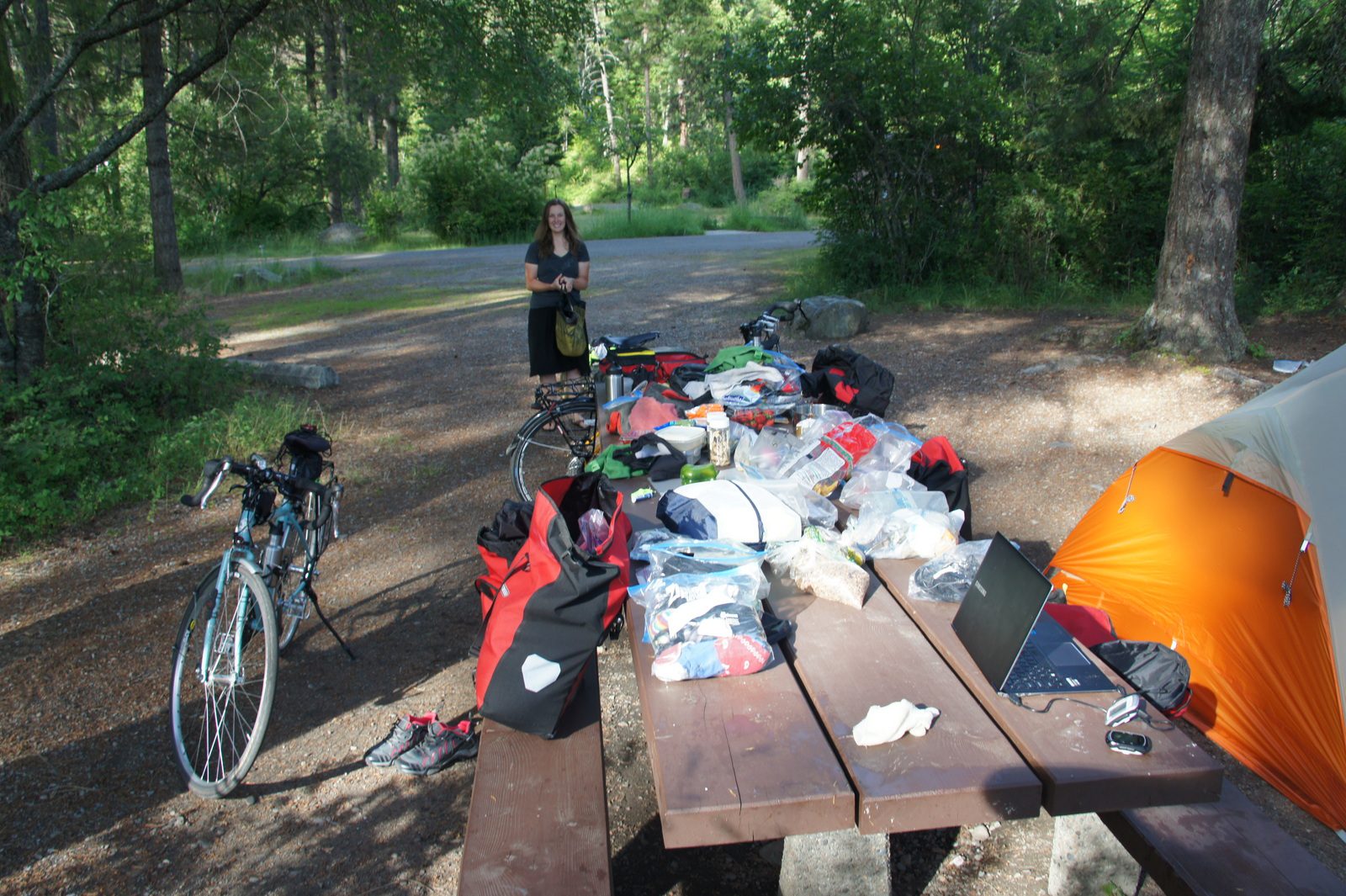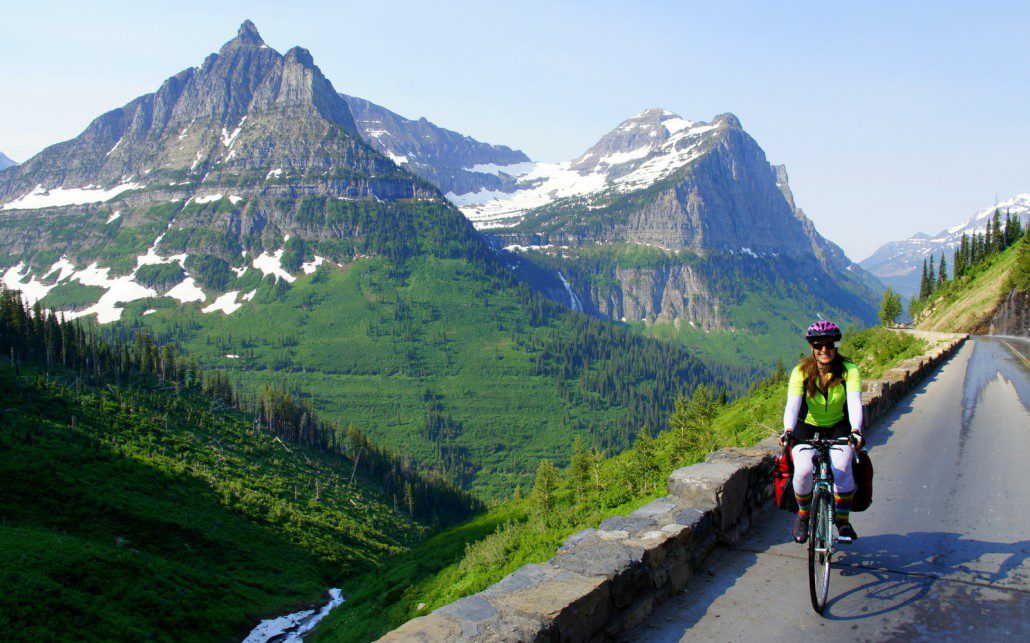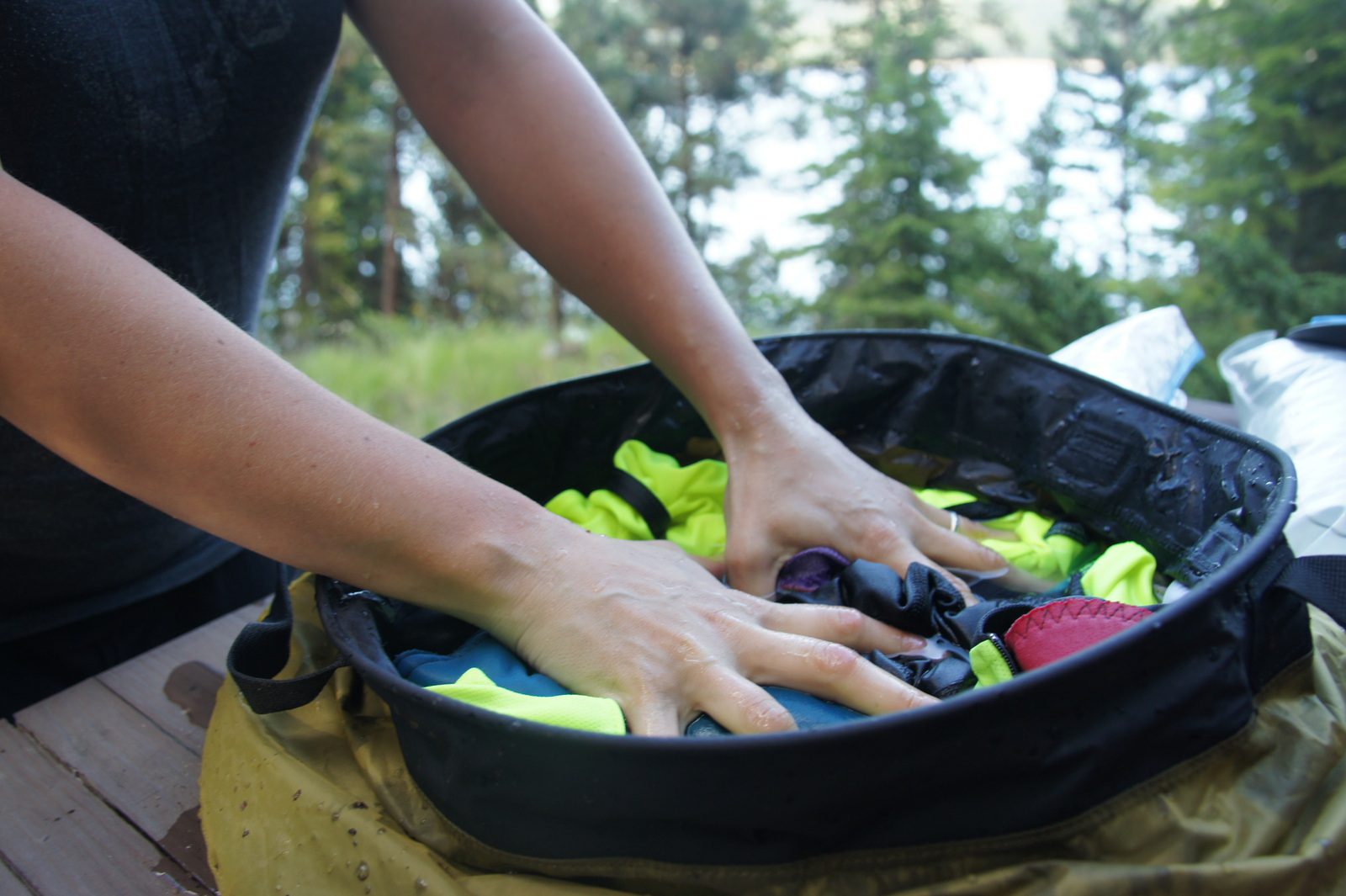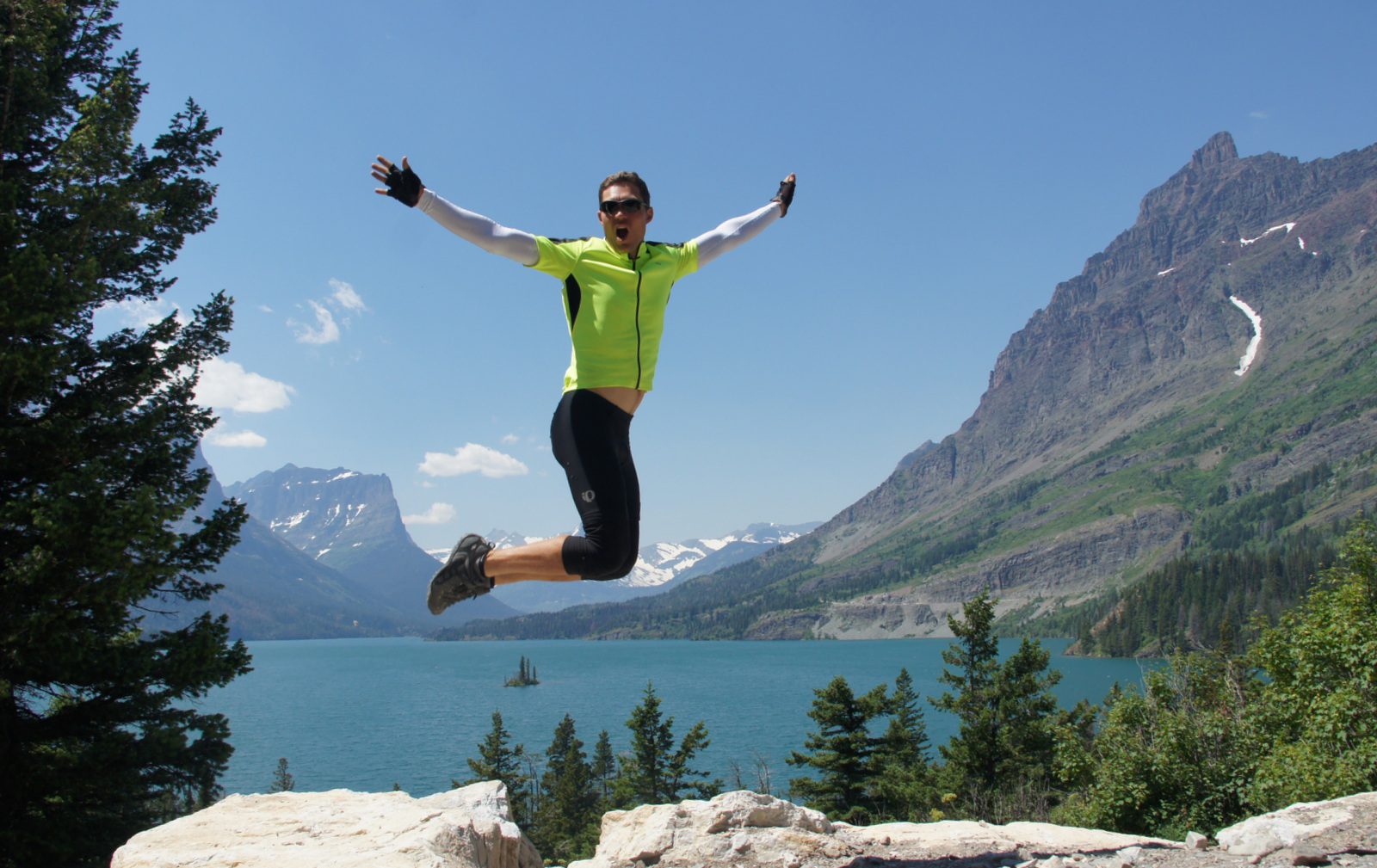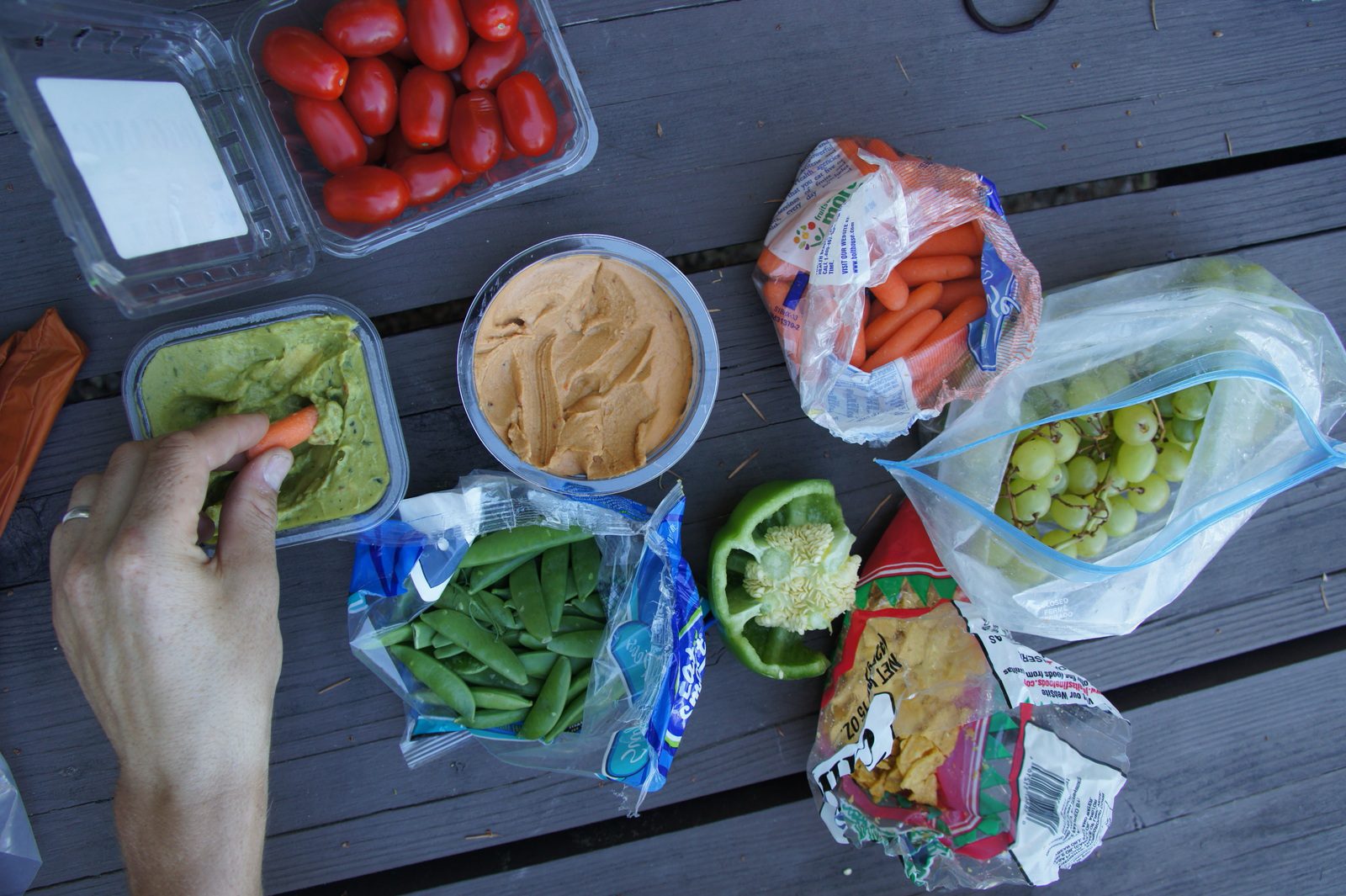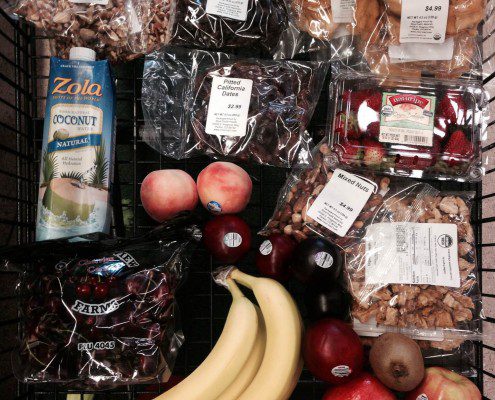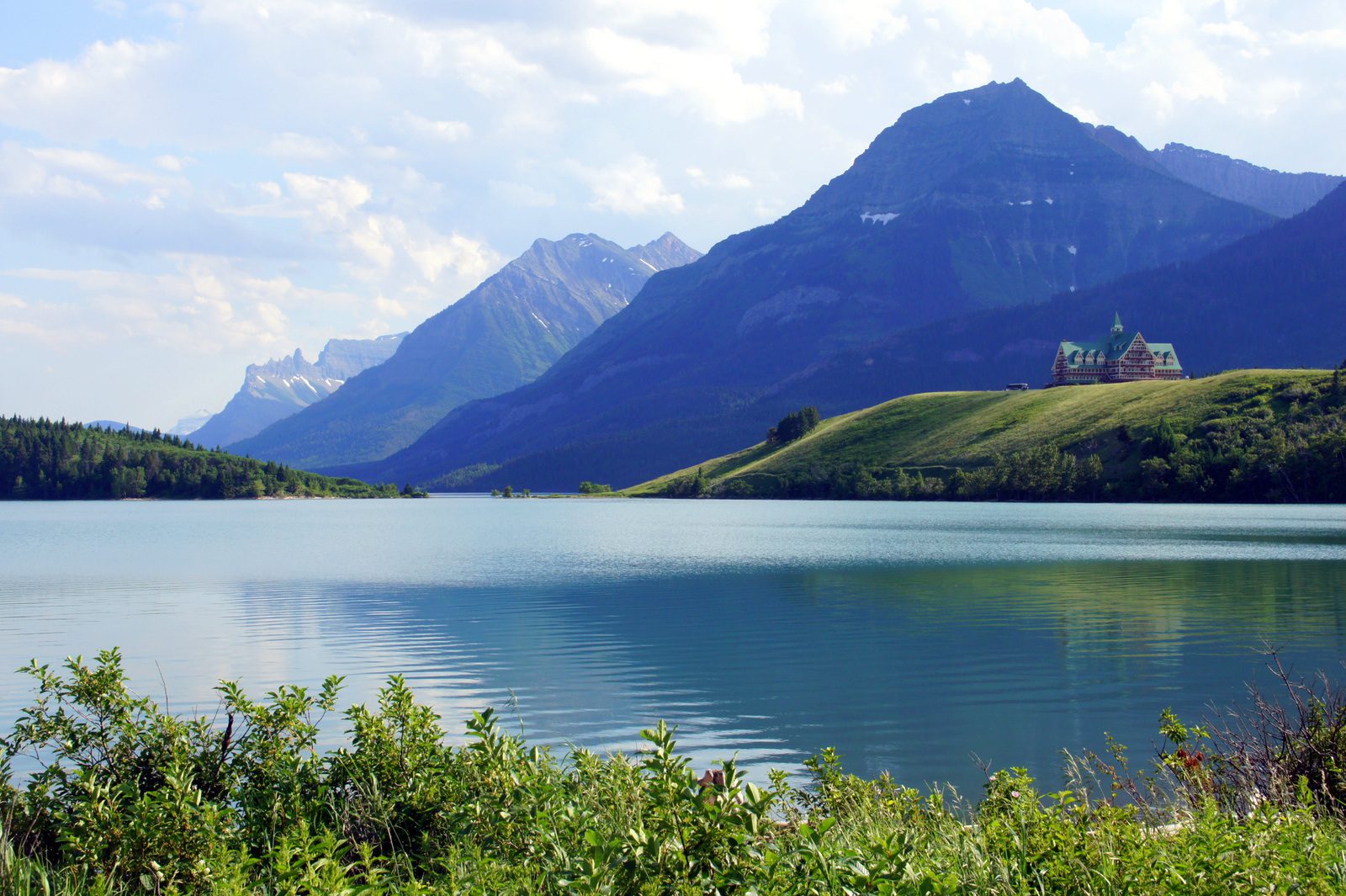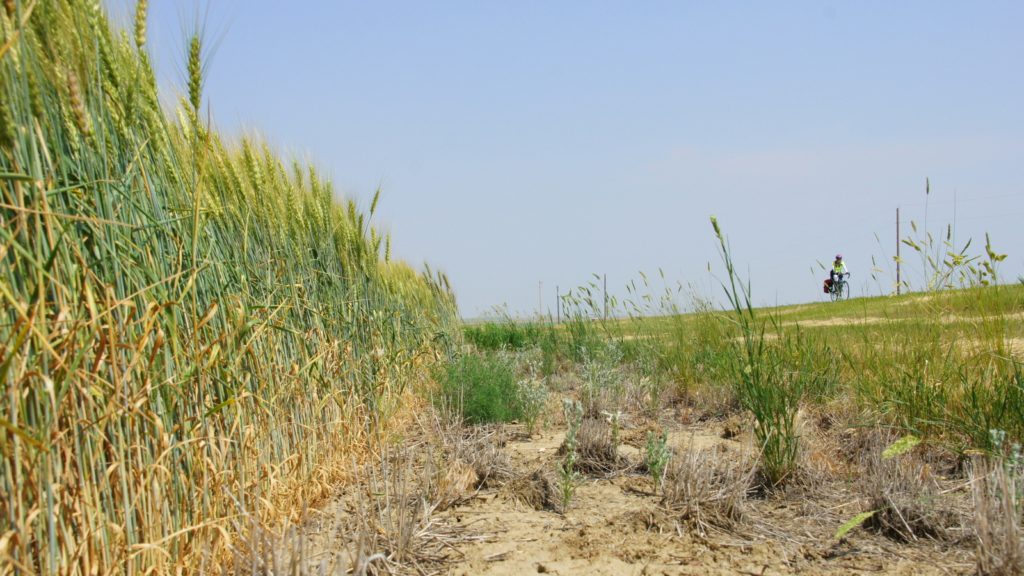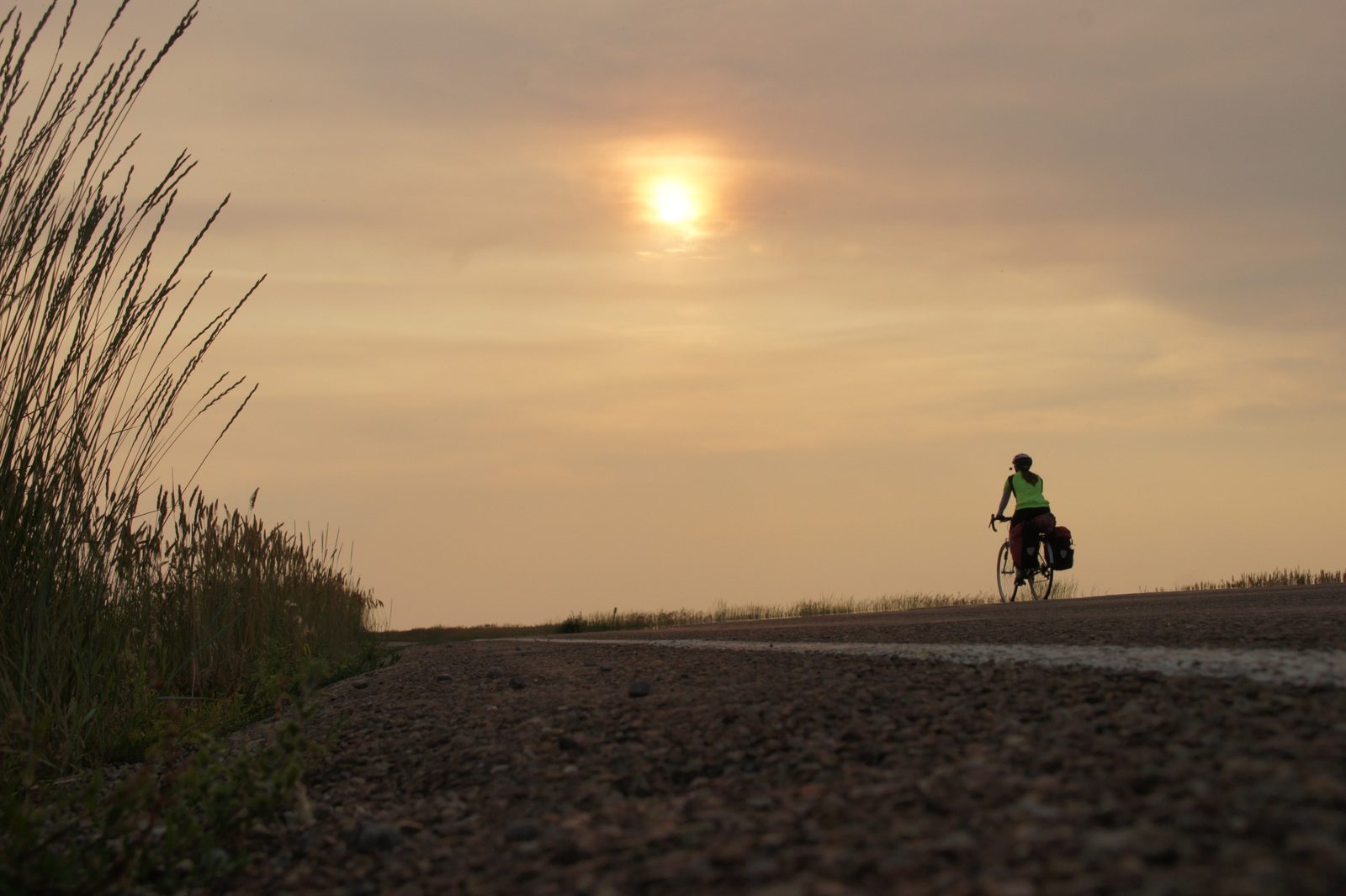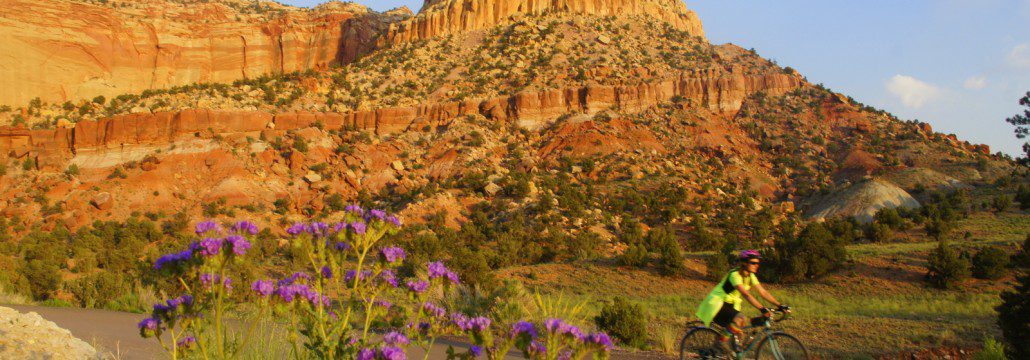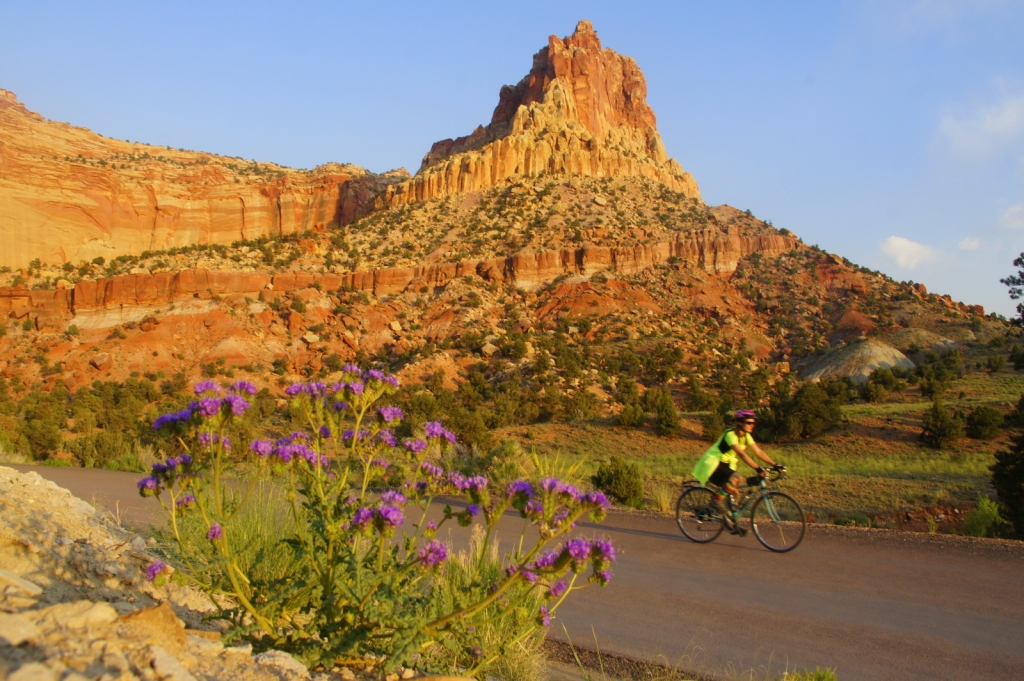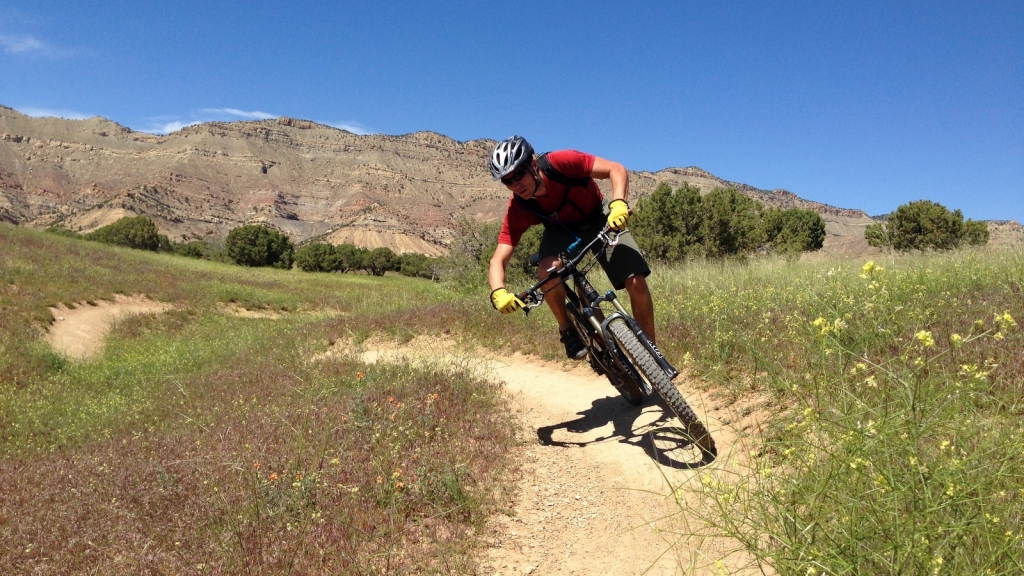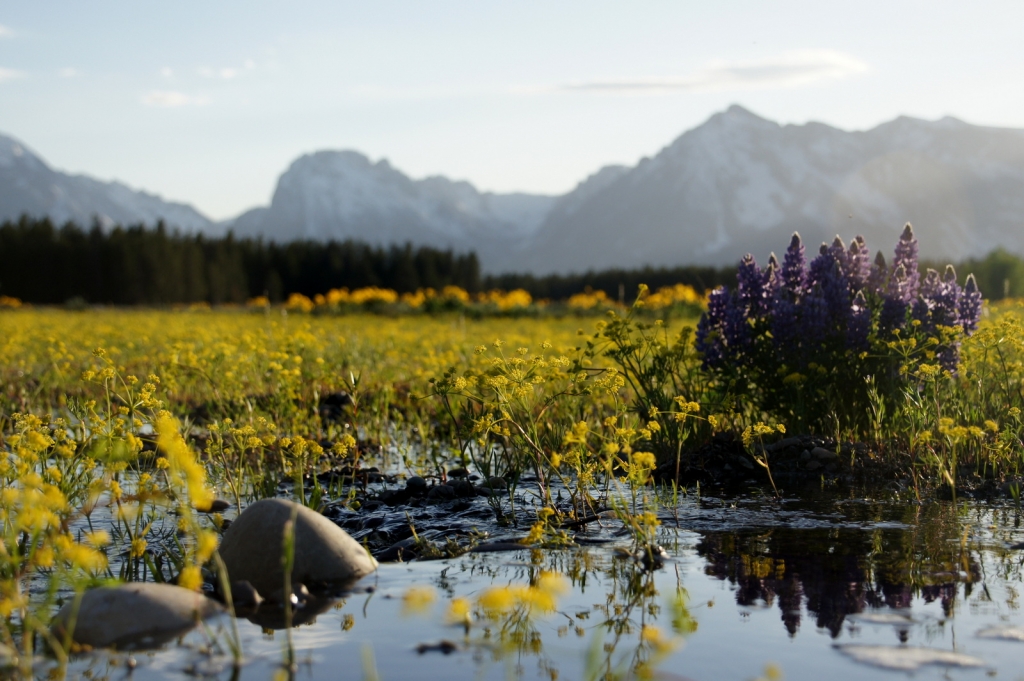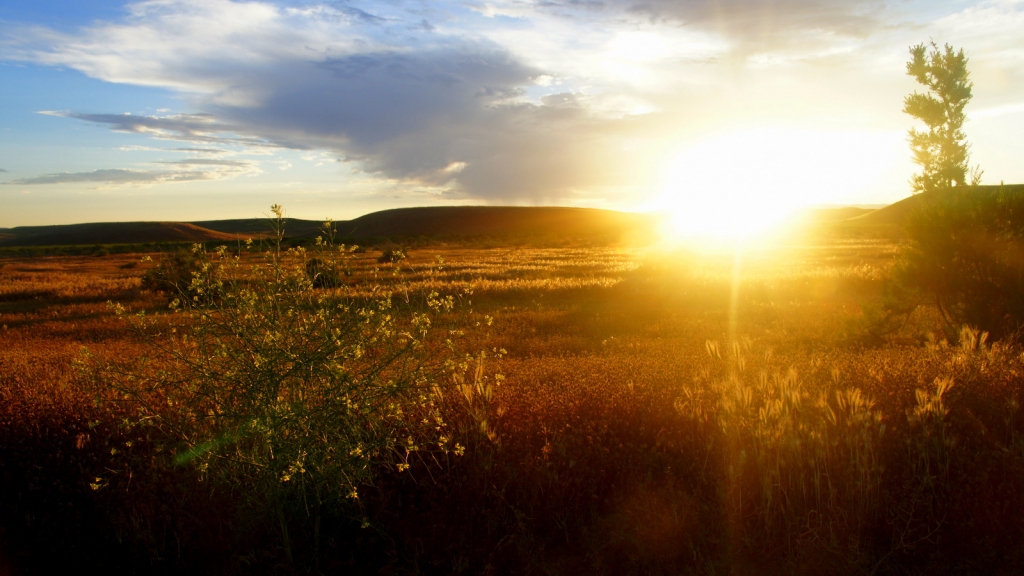How to Bikepack on a Plant-Based Diet
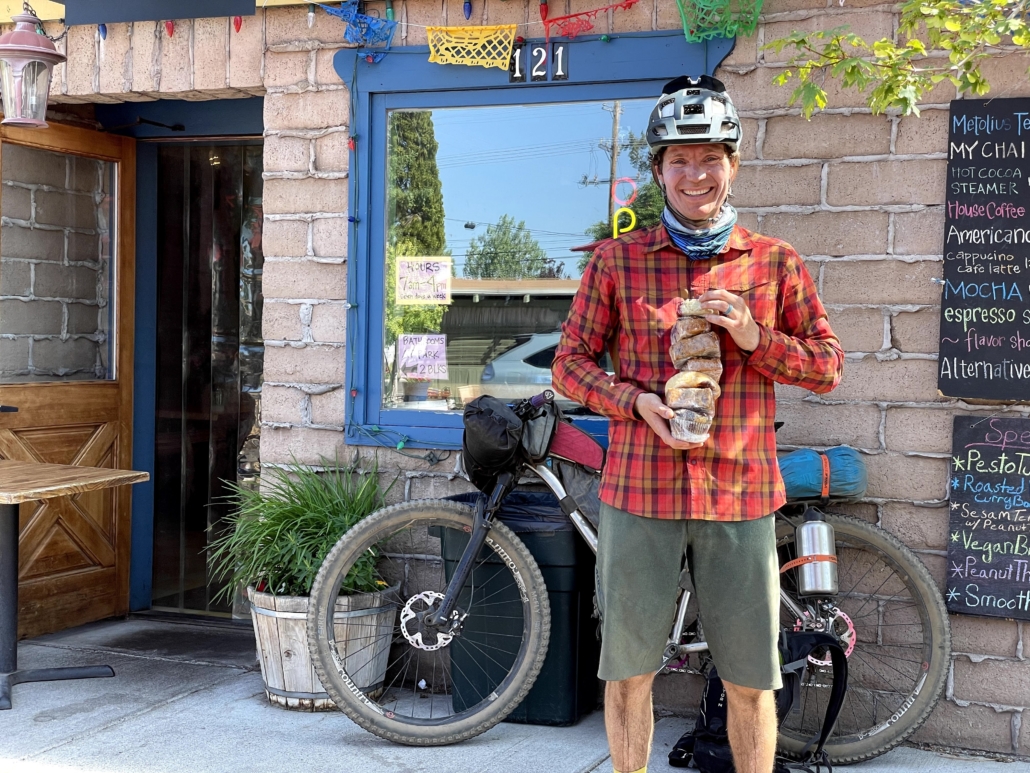
This post is also featured here on Bikepacking.com.
It struck me recently that I’ve bikepacked or bike toured for over a year of my life. Starting in 2014, I’ve pedaled across states, countries, and mountain ranges, over a thousand hours of exertion and 10,000 miles.
Along the way, I’ve burnt a few calories.
I fueled all 10,000 of those miles following a plant-based diet. And since I couldn’t find a comprehensive blog post talking about this, I decided to write this post!
My goal is to provide concrete, actionable information about trying a plant-based (or plant-leaning) diet for your next bike trip. I cover the following (click to skip ahead):
- My experience with plant-based bike travel
- Bikepacking vs. bike touring
- Trips I’ve done
- My mindset for plant-based travel
- General bike travel tips
- Food I carry while bikepacking
- What to eat in rural towns
- Food I carry while bike touring
- Tips to hit the road
- Photo gallery
First off, I want to say this: food is personal. I’m not a doctor or a nutritionist and I’m DEFINITELY not here to tell you how to eat. But if you’re interested in leaning more plant-based on bike trips, you’re in the right place.
Let’s jump into it.
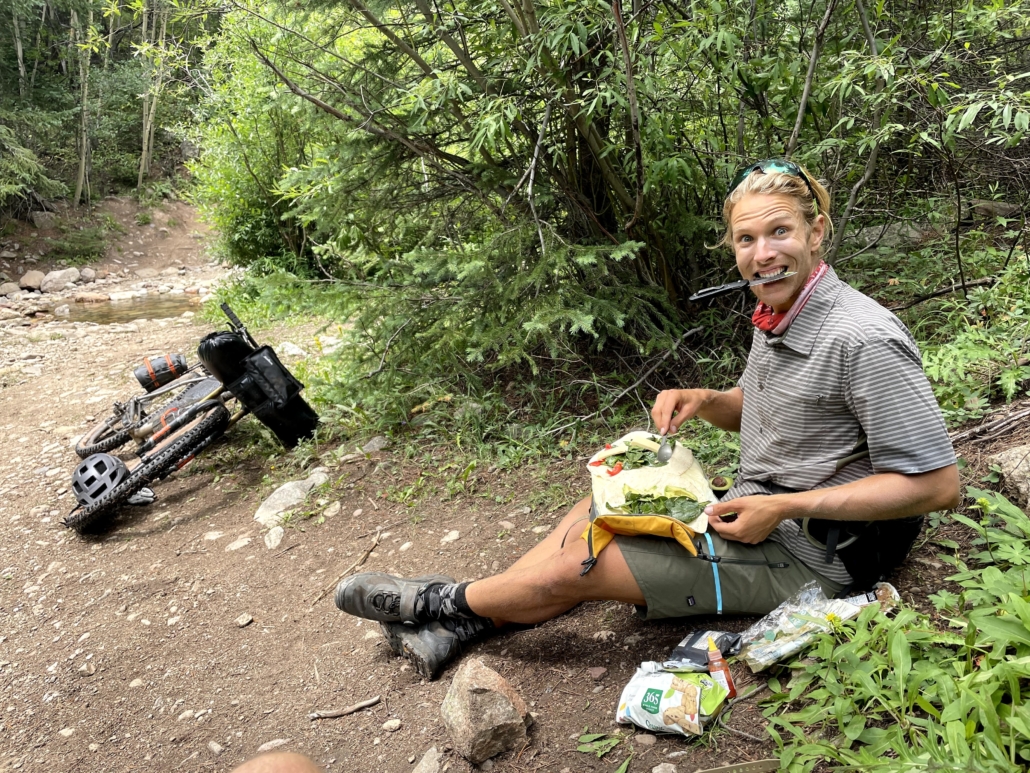
My Experience with Plant-Based Bike Travel:
After almost a decade of pedaling on plant power, here is what I’ve discovered:
- Bikepacking on a plant-based diet is totally doable: I’ve found that plenty of calories, balanced nutrients, and a high energy level were the norm.
- There’s never been a better time to live and travel as a plant-based person. From rural restaurants to big city dining, I’ve found and enjoyed plant-based food options.
- In foreign countries, the grocery store and restaurant treasure hunt is an enjoyable part of the travel experience.
- If I’m kind and clear with my requests, people return the kindness and help get me what I need.
- Staying true to my values during a trip is empowering. I enjoy the opportunity to be an ambassador for plant-based eating.
What’s the Difference Between Bike Touring and Bikepacking?
For me, bike touring means paved roads and hence more amenities like grocery stores most days, along with restaurant and hotel options. Our trips biking across the U.S.. or Europe on small highways, back roads or car-free paths are a perfect example of touring.
Bikepacking is off-road on gravel roads or dirt trails. It’s typically more remote traveling with fewer resupply options and less carrying capacity on the bike, e.g. Bikepacking the Colorado Trail or Oregon Big Country. It might be multiple days without any resupply options.
I think both are fantastic ways to travel and I will continue to do both. That said, I’m skerrred of cars and Tiktokking Teens behind the wheel, so I avoid paved roads whenever possible.
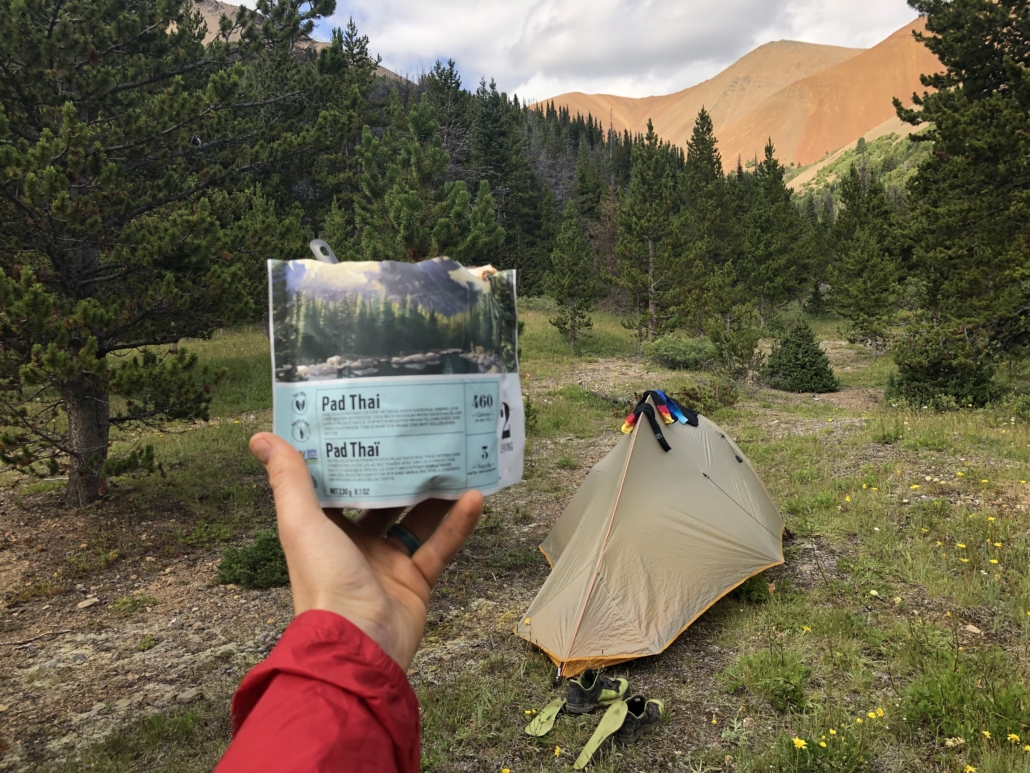
Quick Credibility Builder
Here’s a rundown of some of the bigger bike touring and bikepacking trips I’ve done on a plant-based diet. I bring these up to illustrate that big, physically-demanding trips are entirely possible powered entirely on plants.
- Toured 4,000 self-supported miles across the U.S. from Idaho to Portland, Maine with my wife Chelsea.
- Pedaled 2,500 self-supported miles through 13 countries in Europe with Chelsea, plus another 2 months through Spain and Portugal.
- Bikepacked across Oregon on the Oregon Timber Trail, the Oregon Outback, Oregon Big Country and Three Sisters, Three Rivers, plus the Odyssey of the VOG. I’ve also pedaled (and pushed) my bike through the remote Chilcotin Wilderness and the epic Colorado Trail.
- Raced 100 miles on a mountain bike a couple times (2017, 2019), a 9+ hour event. (Plant-based racers like Dylan Johnson absolutely crush.)
- Many hundreds of hours of mountain bike day rides.
You’ll note that my trips are limited to North America and Europe (for now!). However, plant-based friends have pedaled E. Europe and S. America, Nepal, and other regions around the world and done juuuust fine.
Dig this kind of post? Check out my 2x/month Traipsing About newsletter!
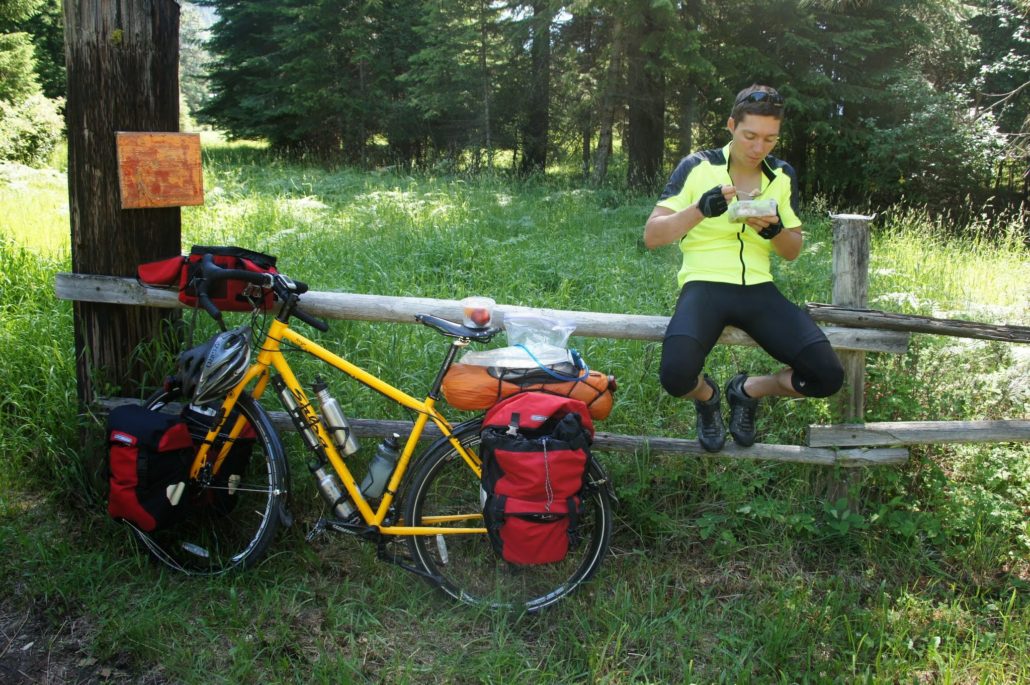
The Mindset
My shift to plant-based in 2013 simply required commitment and just owning it. Most people understood and supported me. Even if people didn’t understand why I was making the choice, if I was clear and kind with my requests, they helped me get what I wanted.
I’ve discovered that eating plant-based is like any other boundary that we set to build our ideal life. If we have a preference and we’re crystal clear about it, then if somebody responds poorly, that’s great feedback to moooove along.
EVERYone these days knows somebody with a standard American diet. (I recall a server in a small-town diner in Nebraska who had a cousin who ate plant-based.) A keto brother, a gluten-free roommate, a vegetarian aunt…people will understand.
On the health side, I’ve always prioritized my personal health, but my blood work at 40 years old is better than it was in my 20s! I’m able to do all the cycling I did before (actually, now I do a lot more…). In fact, many badass professional athletes are plant-based, as documented in the movie The Game Changers.
Also, plant-based diets help people optimize body composition, oftentimes dramatically dropping fat. Bike travel is hard enough, so shaving a few pounds never hurts. It’s certainly cheaper to eat plants than it is to buy carbon wheels.
Given the positive results and empowering feeling that my choices are better for the planet, animals, and me, I can’t endorse a plant-based lifestyle enough.
Enough background. Let’s talk about what I eat on bike tours.
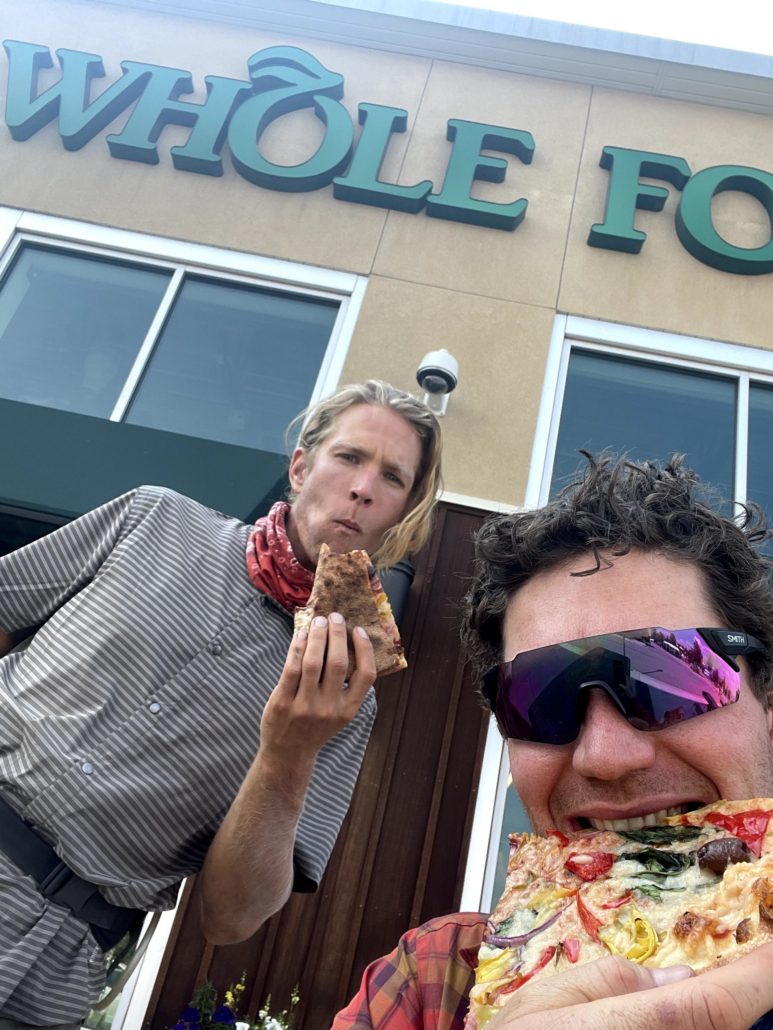
Food for Bikepacking vs. Bike Touring
In my experience, bikepacking tends to involve steeper, more challenging terrain. Keeping bike (and human) weight to a minimum matters more when I’m lifting my bike over 200 downed trees.
Loaded up with food and gear while road touring, I just downshift and go slower. On a trail, I curse downed trees and wish I’d done more pullups for trip prep.
Space is also more at a premium on a bikepacking setup. Without spacious panniers, options for storing food are limited. On a road bike tour, I’ve carried crazy amounts of grub: half a watermelon, cans of beans and jars of olives… Whatever! An extra 10 pounds of food barely slows me down. Spin up those hills!
But can I lift that bike over a tree or power through a steep move on a trail? Hellll no.
As such, I make different decisions.
General Tips for Bike Travel
Whether I’m bikepacking remote mountains or bike touring through places like Europe, some things I do hold true:
- I usually carry a small stove (a Jetboil), but I also like to cold-soak my overnight oats so it’s ready first thing. I do the same with some freeze-dried meals so they’re ready when I’m hungry vs. woefully staring at the cold package and considering attacking my companions to commandeer their food.
- For really remote trips (e.g. the Oregon Big Country), I mail food ahead! It’s easy: I simply find a post office in the area I’m passing through and send a package to myself marked general delivery. For $10-15 bucks in shipping, I can have exactly what I want. One caveat: check the hours for the post offices, because sometimes they are limited in small towns.
- Gas stations/convenience stores exist in every.single.town and contain tons of plant-based options. (Maybe not the most healthy, but whatever. Fritos, mmm.) Here’s a list of plant-based foods available in convenience stores—so many! Yup, Oreos make that list. And Nutter Butters, for which I’ll trade a spare arm during a hungry moment.
- Bike travel makes me HUNGRY and sometimes it’s tough to carry enough calories to make up for full days of biking. To combat that, I backfill the calorie deficit by eating all the heavy, calorie-dense, yummy stuff while I’m at a restaurant or outside a grocery store, bakery, convenience store…anywhere. I also load up on nutrients via seaweed salads, salad bar items, oranges. And watermelons, obv.
- I almost always order two portions at a restaurant, eat one there and one to go. For road tours, I’ll bring a watertight container that can take leftovers to get a few hours later.
- When I’m grocery shopping, I divide my haul into two portions: The stuff to load onto my bike and the stuff I wolf down to refuel on the spot.
Bikepacking on a Plant-Based Diet: Food for the Trail
Below is a list of my go-to bikepacking food. I aim for as little processed food as possible, though that falls apart if I’m starving and find Sour Patch Kids in a gas station.
Regarding freeze-dried meals, some people make their own, but I’ve never wanted to spend the time. If you watch for year-end sales, you can get meals quite cheap. Plus, hey, you’re sleeping on the ground, so if finances allow, treat yourself!
In general, focus on calorie-dense foods. You’re not trying to lose weight on tour, you’re trying to fuel your engine. Stuff as many calories in your face as possible. (e.g. burritos.)
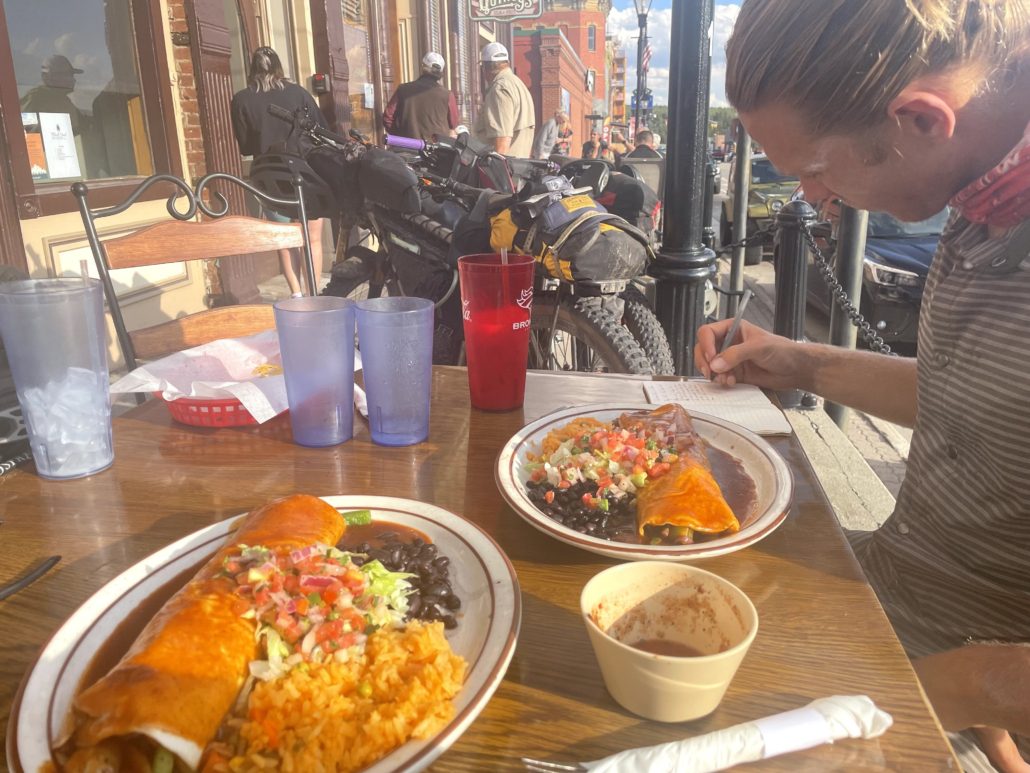
Breakfast:
- Oatmeal. For shorter trips, I premix a bag with nuts, dried fruit, ground chia, and other additions. For longer trips, I simply buy oatmeal packets along the way and mix with calorie-dense additions like trail mix or peanut butter.
Lunch:
- Tortillas – PBJ trail burritos or make a freeze-dried meal into a wrap.
- Sigdal crackers – a nice break from tortillas.
- A (plastic) jar of peanut butter and jam that I pre-mix for trail burritos or for adding to oatmeal. PBJs are clean-burning FUEL.
- Energy bars: Picky Bars are my favorite. Pro Bars are a calorie-dense option as well, with PB Chocolate my fav.
- Trail mix to eat/add to oatmeal and trail burritos—available in every grocery or convenience store.
- Pickles (carried sans juice in a plastic bag). Zero calories, heavy, and yet a divine gift from the gods at the top of a mountain pass when I’m craving salt.
- Olives (transferred to a plastic baggie). All part of my attempt to not only eat sweet treats. Great for adding to freeze-dried meals or eaten alone like a crazed animal.
- Dried fruit (pineapple, mango, dates, raisins) or gobbling fresh fruit if I’m restocking at a store. Raisins with salt provide the same boost as Sports Jelly Beans and are au natural.
- Lupini beans – salty, flavorful, with some moisture. A favorite.
- Bada Bean Bada Boom – crunchy and delicious beans.
- Primal Jerky.
- Fig newtons. Mmmm, figgies. Just typing that makes me want to go buy some.
- Some kind of salt/electrolyte tablet and powder. LMNT is like an IV drip to your piehole. It can overcome any electrolyte deficit.
- Coconut water is a delicious treat.
Dinner:
- Freeze-dried meals. There are a ton of options. Backpacker’s Pantry pad thai is an affordable, excellent option, along with Kathmandu curry and other plant-based options. One for dinner and another that I’d make in the morning and eat by noon each day…or 10 am, heh. If you’re traveling through cities, most outdoor stores will have these.
- Dried soy curls pre-mixed with a custom fajita mix for delicious tacos. Pro tip: bring hot sauce, always.
- Pro tip: Use the tortillas as a wrap for freeze-dried meals. Extra calories!
- Restaurants! Nothing like a 1,500 calorie mega-burrito from a Mexican restaurant or a Subway sandwich to offset hours of biking. A fav move is to grab a burrito to go and keep pedaling, then eat it down the road.
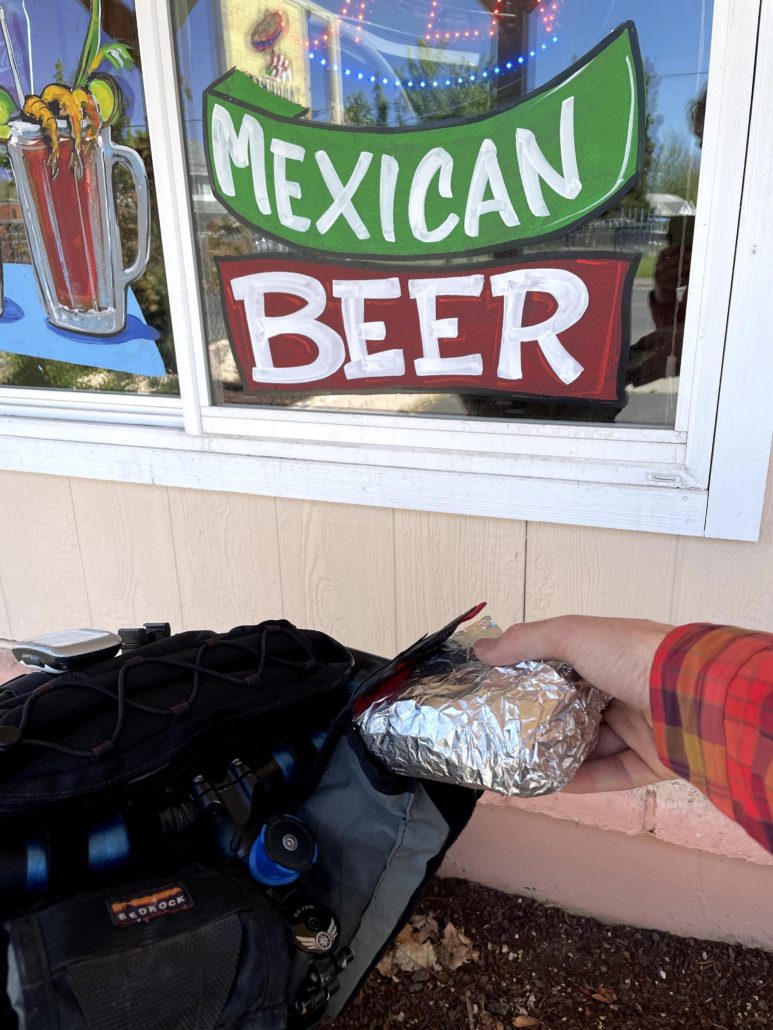
A few tips for bikepacking:
I usually carry a small stove (a Jetboil), I also like to cold-soak my overnight oats so it’s ready first thing. I do the same with some freeze-dried meals so they’re ready when I’m hungry vs. woefully staring at the cold package and considering attacking my companions to commandeer their food.
For really remote trips (e.g. the Oregon Big Country), mail food ahead! Simply find a post office in an area you’re passing through and send a package to yourself marked general delivery with your name on it. For $10-15 bucks in shipping, you can have exactly what you want. One caveat: check the hours for the post offices, because sometimes they are limited in small towns.
Gas stations/convenience stores exist in every.single.town and contain tons of plant-based options. (Maybe not the most healthy, but whatever. Fritos, mmm.) Traipsing About reader, badass cyclist and fitness coach Lauren Costantini put together a list of foods for clients who were racing the Great Divide from Canada to Mexico. Yup, Oreos make that list! And Nutter Butters, for which I’ll trade a spare arm during a hungry moment on the trail.
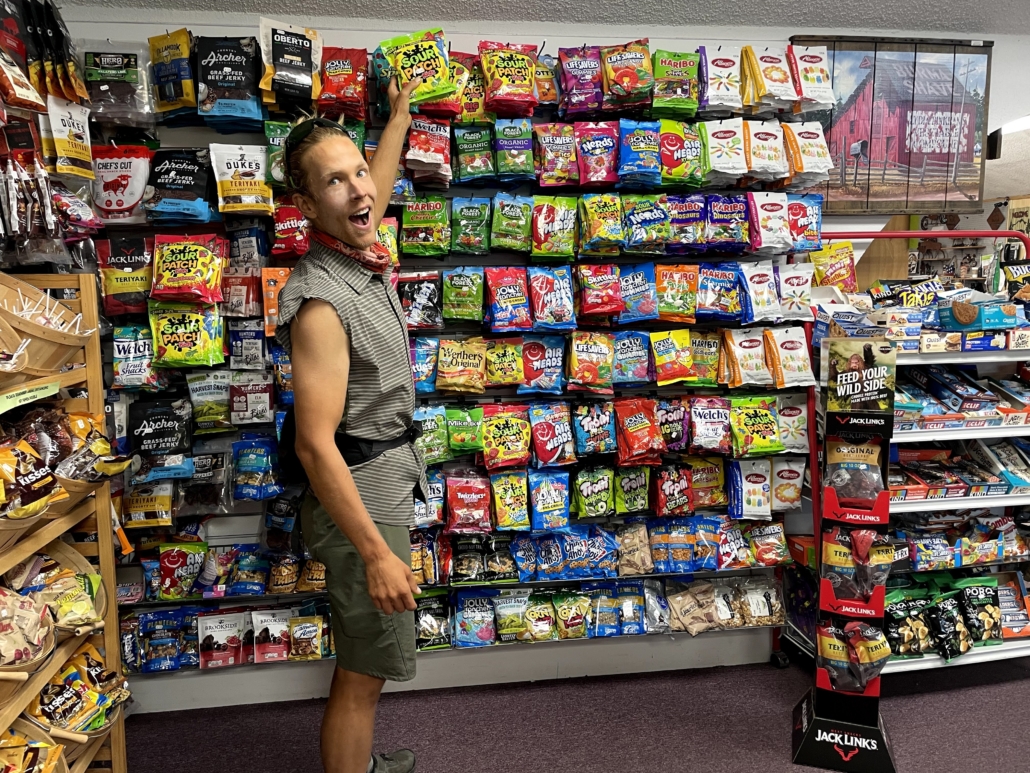
What to eat in Rural Towns
Nobody likes staring at a menu in a small-town diner and thinking, “Ruh roh, I’m going to starve.” Fear not! There are plenty of calories to be had. You just need to ask for what you want!
For example, during my Oregon Timber Trail journey, my friends and I pedaled like hell into Chemult to beat the 9 pm closing of Lori’s Diner. We were famished after a huge, challenging day of carrying bikes over downed trees. (See above section on traveling light…)
Magically, Lori’s had veggie burgers available! Did I eat two of them and wish I’d ordered three? Yep!
The next morning, we were back for breakfast. Everything on the menu contained animal products, but I deployed my secret weapon: asking for what I wanted.
“Hey, can the cook throw together something for me? Just take hashbrowns and load any vegetables you’ve got into it. Maybe some veggie burger too?”
The result? A mouth-watering, satisfying breakfast! Even better, when the cook came out and asked how it was, I got to tell him so. He responded that he’d enjoyed cooking something different.
This illustrates an important point: you aren’t necessarily inconveniencing someone by asking for what you want. With potatoes, rice, pasta, beans, vegetables and a random veggie burger (or not), a delicious meal is possible. These staples exist everywhere.
Ask and you shall receive. Be friendly, but not apologetic. You’re a paying customer. Plus, you showed up on a bike, so you’re obviously crazy already.
(Side note: You’ll notice I didn’t worry about the grill being used for cooking meat. For me, this lifestyle isn’t about perfection, but about best efforts. Perfectionism—in ANYTHING—is simply a recipe for giving up and doing nothing.)
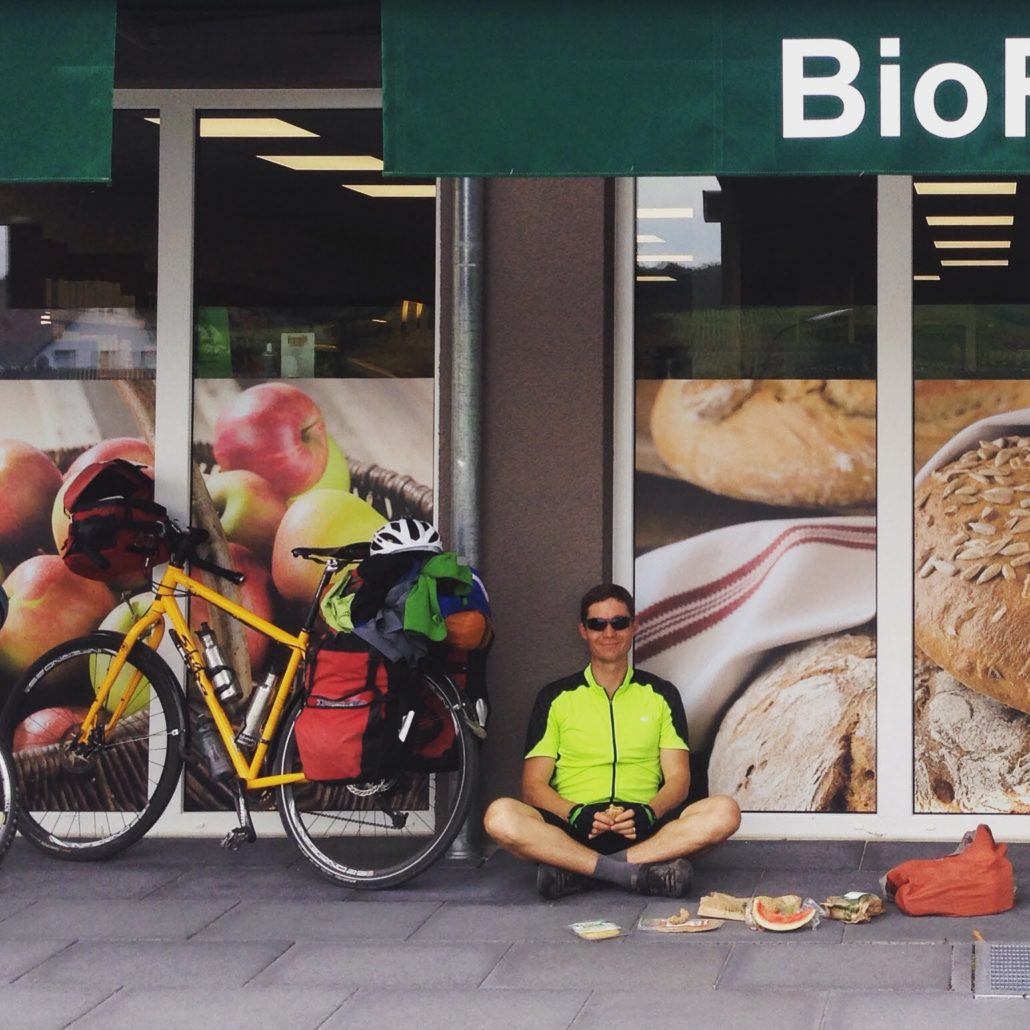
Food for Bike Touring
Bike touring meals can of course include the exact same stuff as bikepacking. However, it’s easier to live a fancier—and healthier—life when you’re touring on the roads. More frequent, higher-end restaurants are a great example.
In Europe, it’s even easier. Restaurants and grocery stores feature tons of plant-based options and we’ve found even the smallest little B&Bs and restaurants offer something plant-based. The Bios (the name for organic shops) offer fantastic options as well. Organic produce is also less expensive in Europe.
Outside of big cities or when I’m camping, I opt to make my own meals with food from grocery stores. Big salads (I’m talking LOADED with calories), simple burritos or wraps, pasta. It’s not home-cooked deliciousness, but after biking all day, it doesn’t matter— food just tastes better.
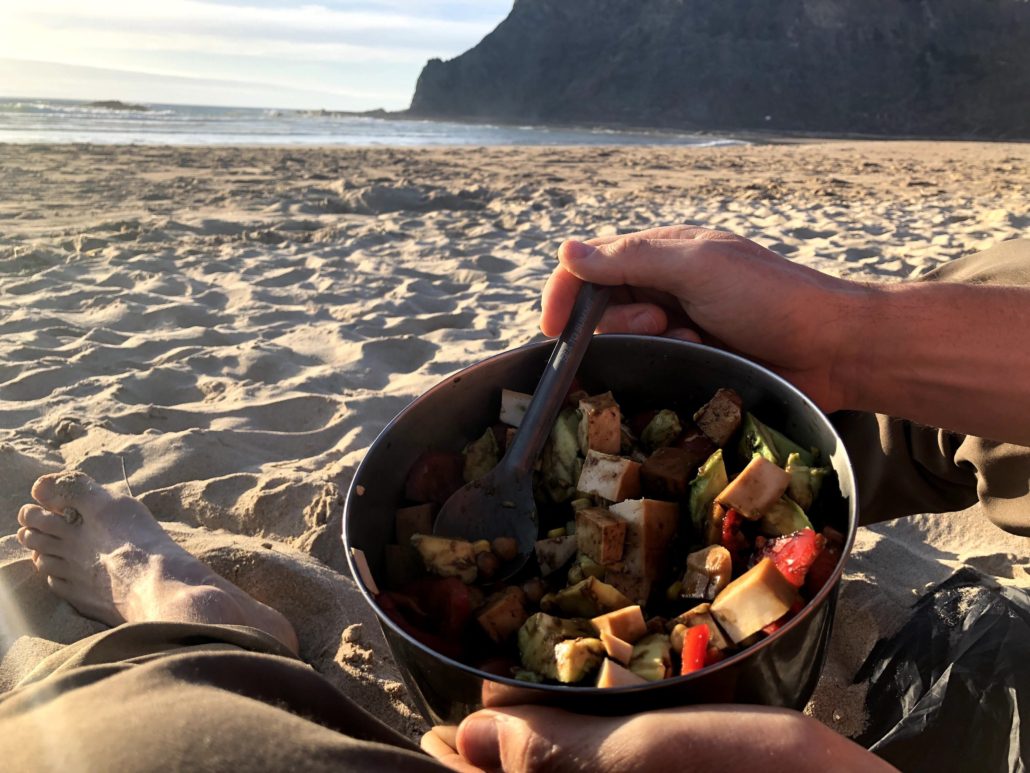
Here are a few staples I grab in grocery stores or restaurants while road touring. Refrigeration isn’t necessary since it’s down the hatch quickly!
- Olives
- Beans
- Tofu or tempeh: get the marinated stuff for max flavor
- Nuts (with beans, tofu/tempeh, and seeds, we easily get enough protein on tour)
- Plant-based meats, cheeses, yogurts and milks.
- Granola or oatmeal
- Salad dressing
- Hummus
- Any and all vegetables
- Avocados and guacamole
- All the fruit: apples, cherries, GRAPES (the best). While we typically don’t carry watermelon, we’ve eaten dozens of them while sitting outside grocery stores. In Europe and the U.S., we load up on fruit at farmer’s markets.
- Pizzas sans cheese. (“We’ve never had anyone order that,” said one lady with a smile at Casey’s convenience store in Illinois. Pizzas for $10 that we ate like Velociraptors.)
- Carbs! Bread, tortillas, plant-based pastries if we could find them…fuel those miles.
- Canned chili, baked beans or lentil soup (Amy’s is a go-to brand of mine)
- So. Many. Options. Enjoy that bike touring luxury!
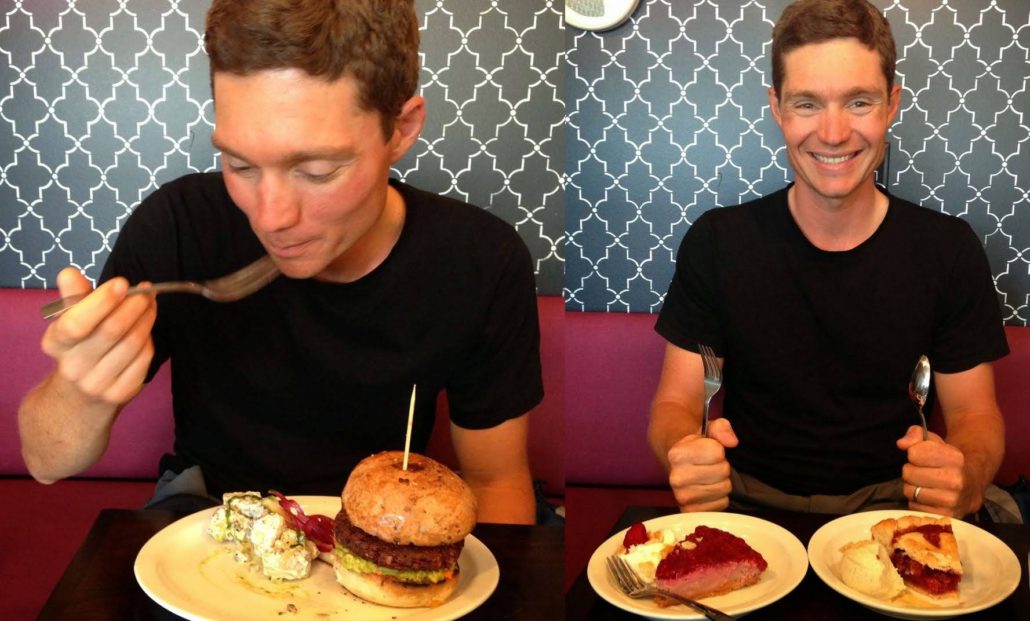
Putting Rubber to the Road
Time to hit the road! All that’s left to do is buy a bunch of grub and load your bike up. Before you do, here are a few additional tips to dial in a positive mindset:
- Add, don’t subtract. Rather than thinking about things you can’t eat, simply substitute plant options. e.g. get that veggie burger at a restaurant, buy plant-based lunch meat or chili.
- It’s not all or nothing. A substantial and meaningful diet shift is best accomplished slowly, piece by piece. You might be surprised how easy it is to eat 75% plant-based with little dislocation to your eating habits. Experiment with plant-based options.
- Treat it as a treasure hunt. Enjoying the challenge of seeking out plant-based options is like not buying shitty tomatoes out of season at the grocery store: it’s a bigger reward when you find that special, tasty item. (Coconut Bliss ice cream in a small grocery store in the Midwest comes immediately to mind!)
- Feel good knowing you’re helping your health, the environment, and animals. It’s an easy way to have less impact, one bite at a time.
You’re ready to roll! Pick a route, pack your bags, order that grub, and get out there.
For further reading, check out a few of my related bike touring or bikepacking posts:
- What I learned touring 7,000 miles on a plant-based diet
- Bike touring FAQs
- The wonderful, trying adventure of bike touring
Lastly, here are a bunch more photos of delicious plant-based food that has fueled me along the way. Just flipping through my trips and seeing this stuff got me excited (and hungry) for the next adventure!
Dig this post? Check out my 2x/month Traipsing About newsletter for trip reports, other bikepacking tips, and other ways to level up your life.
Photo Gallery



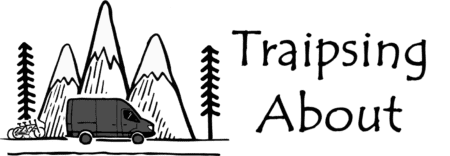
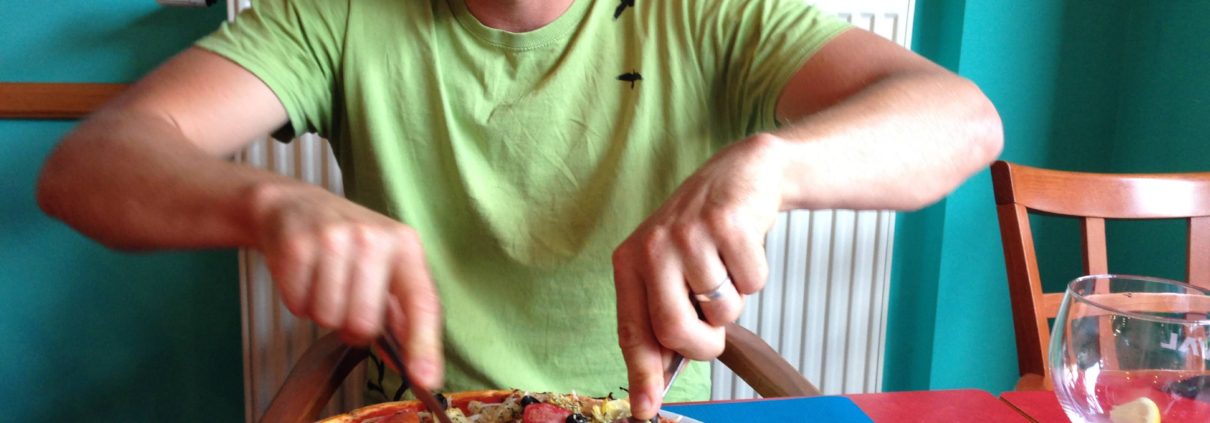














































































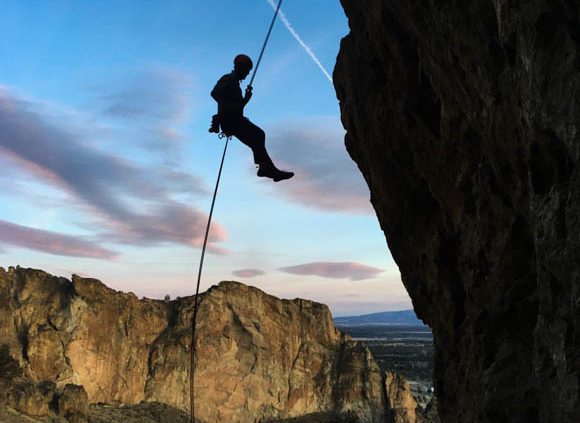
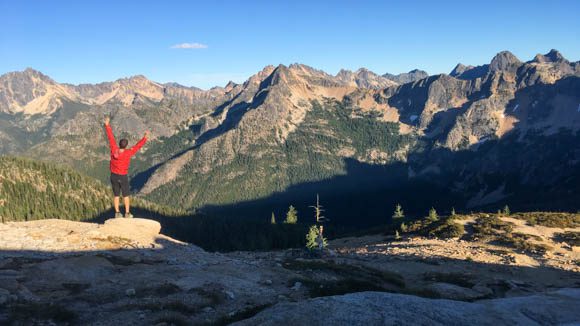 I’ve aimed to write this post for over eight months. (All photos in this post are from that time frame too!) It’s for anyone dreaming of traveling long-term, and also for those living that dream wondering, “Will we do this forever?”
***
As long-time readers know, Chelsea and I launched our van trip in fall 2013 for a four-month jaunt down the coast of California. “FOUR MONTHS IS SO LONG!” our friends opined. “Don’t forget Oliver,” said Chelsea’s parents as we dropped our fuzzy companion off for cat-sitting.
Little did we (and my unsuspecting in-laws) know we’d live the van life for three years, not four months.
I’ve aimed to write this post for over eight months. (All photos in this post are from that time frame too!) It’s for anyone dreaming of traveling long-term, and also for those living that dream wondering, “Will we do this forever?”
***
As long-time readers know, Chelsea and I launched our van trip in fall 2013 for a four-month jaunt down the coast of California. “FOUR MONTHS IS SO LONG!” our friends opined. “Don’t forget Oliver,” said Chelsea’s parents as we dropped our fuzzy companion off for cat-sitting.
Little did we (and my unsuspecting in-laws) know we’d live the van life for three years, not four months.
